1. Lobster
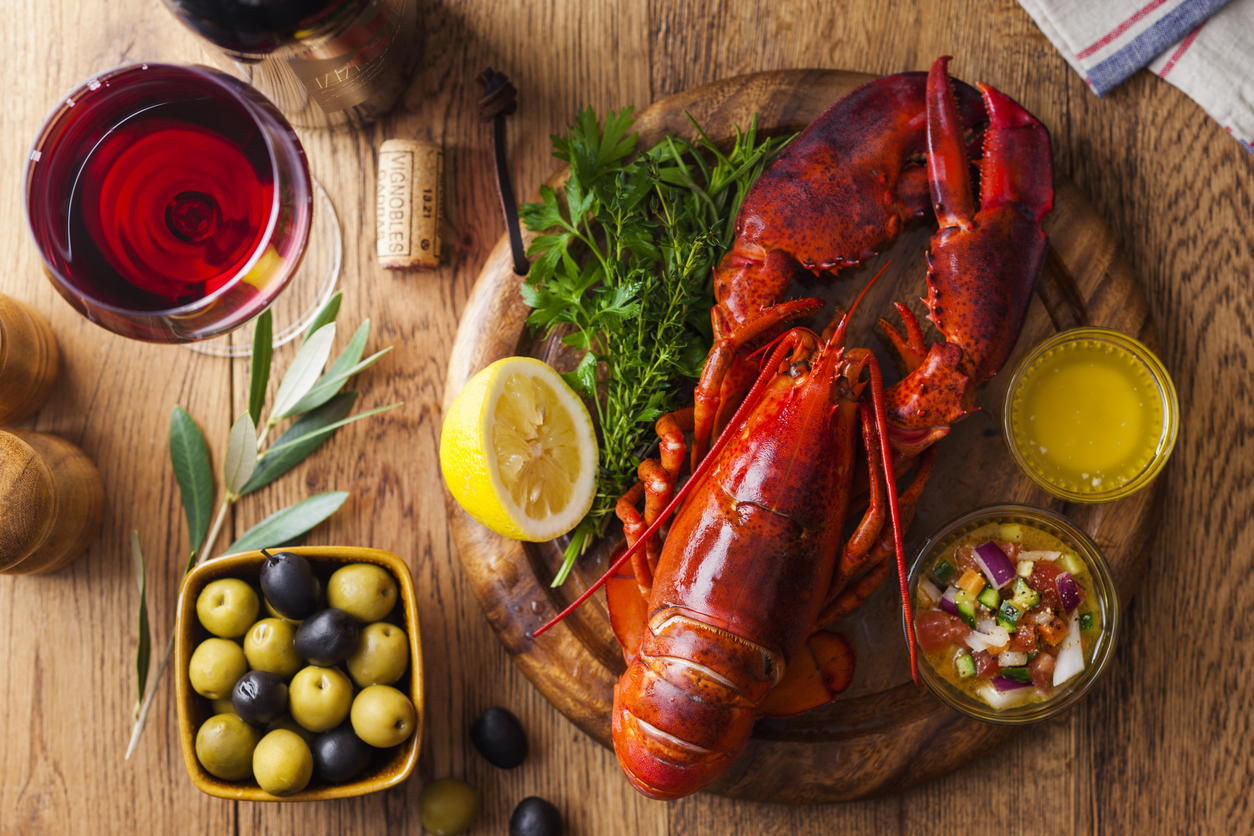
Once upon a time, lobster was so abundant along the New England coast that it was considered trash food. It washed up on beaches in droves and was fed to prisoners, servants, and even farm animals. Some indentured servants demanded contracts that limited how often they could be served lobster. It was seen as sea vermin, a bottom-dwelling insect no one was proud to eat. The meat was chopped up and mixed with cornmeal to hide its identity. For a while, it symbolized struggle and shame, not indulgence.
Today, lobster is practically synonymous with luxury. It’s featured on prix fixe menus, flown across the globe in chilled containers, and plated beside champagne flutes and gold leaf. You’ll find it in butter-poached rolls in Maine or draped in caviar on private jets. The meat that once littered docks now sits atop white tablecloths and polished silver forks. Diners crack shells with joy and post photos like trophies. Somehow, this sea bug pulled off the ultimate comeback. It went from peasant food to palatial dining with barely a claw out of place.
2. Bone Marrow
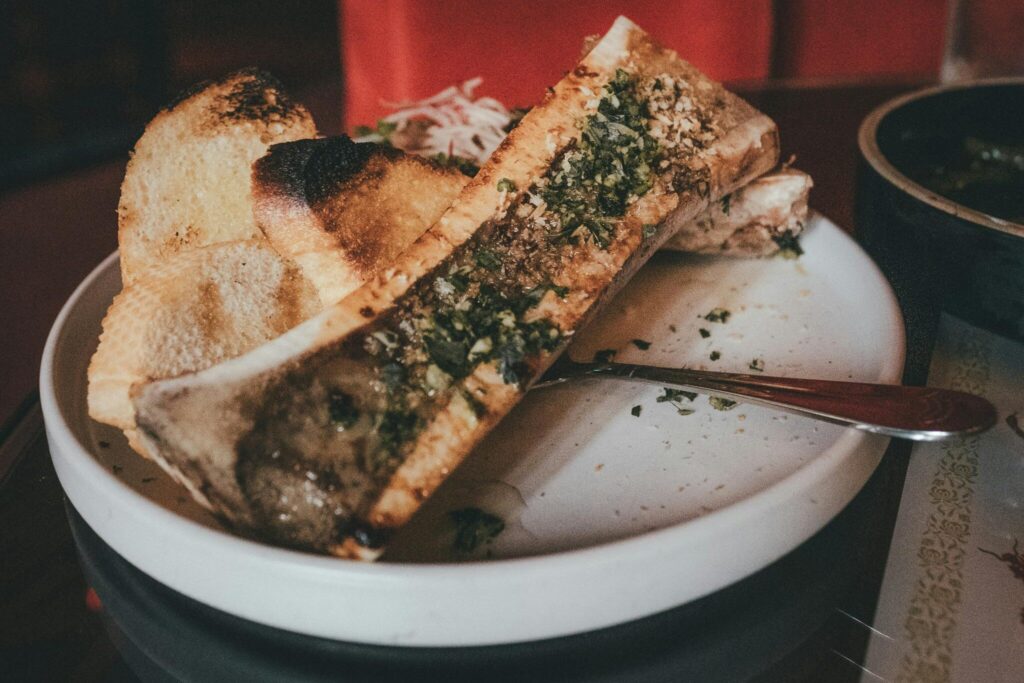
Bone marrow wasn’t born glamorous. For centuries, it was harvested out of necessity, scraped from roasted bones and added to broth to make the most of every last nutrient. It was common in peasant households, where nothing went to waste and bones were simmered for hours to stretch meals. Marrow wasn’t served to impress guests. It was what you ate when you had to make do with leftovers. Rich in fat but low in status, it stayed quietly in the background of survival cooking.
Now, it’s the star of the show. Bones stand upright on fancy plates, their centers glistening with warm, buttery marrow, often sprinkled with herbs or truffle salt. Diners scoop it out with tiny spoons and spread it on crostini as if unveiling a secret. It’s rich, indulgent, and frequently paired with expensive wine. What was once hidden at the bottom of a soup pot now comes with a side of fanfare. Marrow has moved from humble bone broth to the height of culinary elegance, no apology required.
3. Oxtail
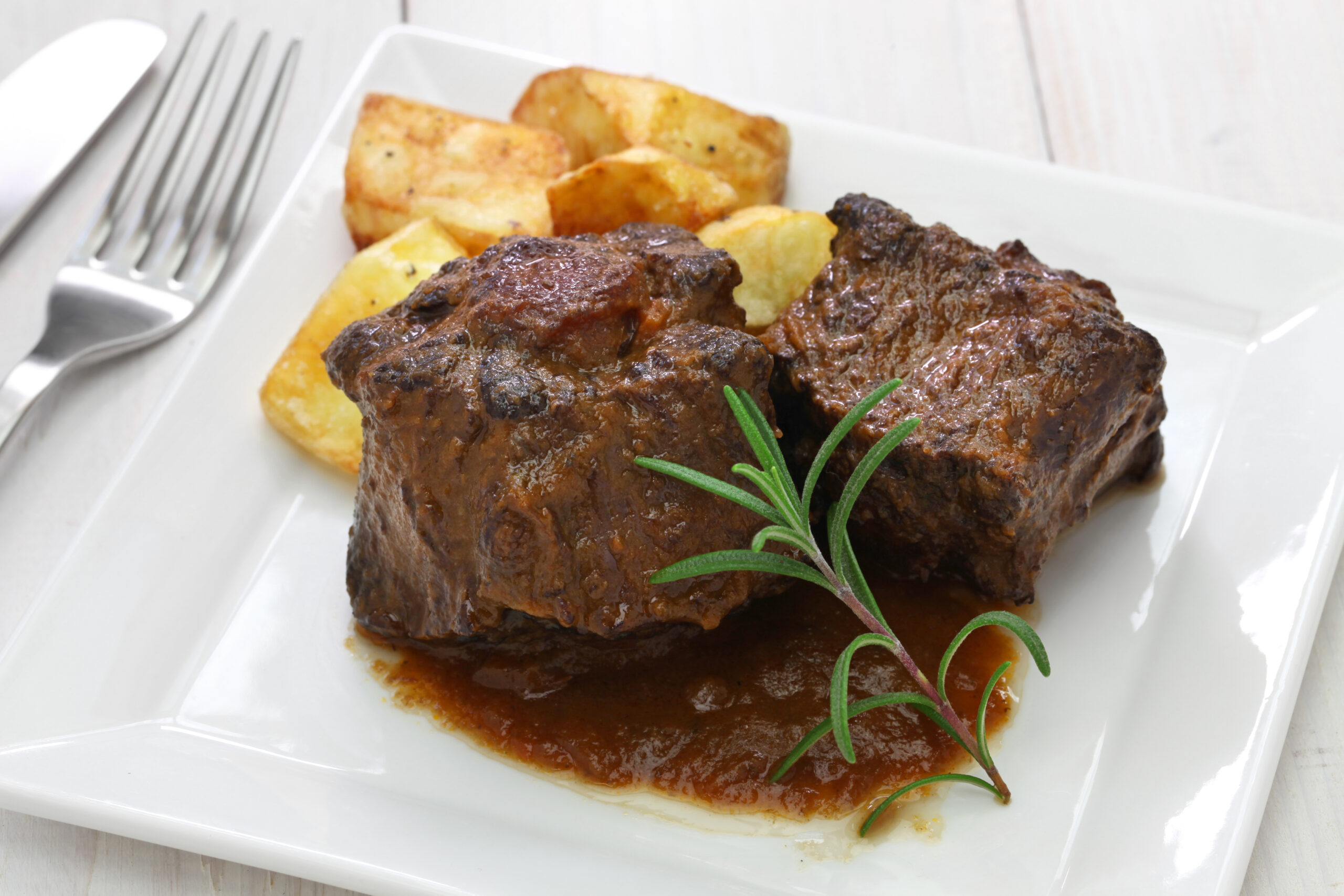
Oxtail was once the ultimate underdog cut, left behind in butcher shops or tossed in as part of a cow’s offcuts. It was tough, bony, and full of connective tissue, requiring hours of slow cooking just to be edible. Working-class families made it work, turning oxtail into hearty stews and soups that filled the house with savory aroma. Caribbean, Korean, and African cuisines gave it a permanent place at the table, not because it was fancy, but because it was flavorful and affordable. No one saw it as gourmet, just practical.
These days, oxtail wears a different badge. You’ll find it braised in red wine, glazed with soy, or served in small portions with foie gras on fine china. Chefs lean into its richness and gelatinous texture, treating it as a delicacy rather than a compromise. Its flavor is deep, meaty, and unforgettable, making it a favorite among food lovers in search of something bold. Once a budget meal, oxtail now competes with filet mignon for top billing. The cow’s tail has taken its victory lap.
4. Polenta

In northern Italy, polenta was a working-class staple made from ground cornmeal boiled into a thick, hot mush. Families stirred it over wood stoves and ate it plain or with a splash of milk or oil if they had any to spare. It was cheap, filling, and sometimes all you had on the table. Polenta didn’t scream elegance. It whispered survival. It was the kind of meal that got you through hard winters without breaking the bank.
Modern chefs have turned polenta into a blank canvas for decadence. It’s now served with wild mushrooms, truffle oil, braised short ribs, or blue cheese crumbles. Some plate it in neat squares, grilled to a golden crust. Others serve it soft, creamy, and ladled into shallow bowls like Italian velvet. Once seen as poor man’s porridge, polenta has risen to become a gourmet darling. Even the humblest dish can rise when given a chance to shine.
5. Chicken Liver
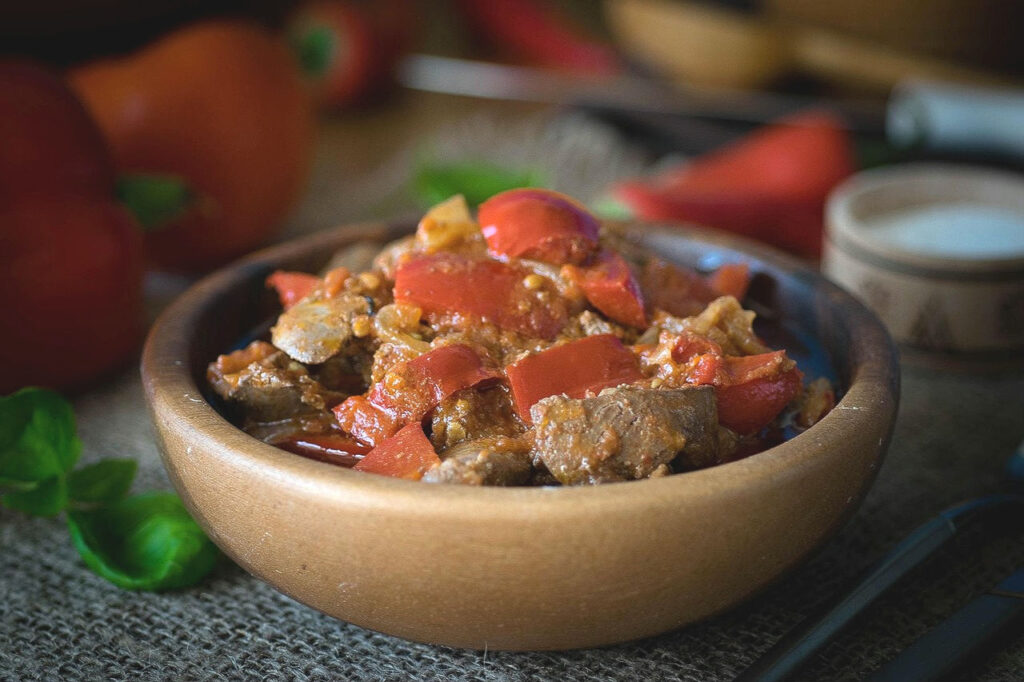
Chicken liver was the kind of thing you cooked when money was tight and meat was hard to come by. It was often fried in a cast iron pan with onions or tossed into rice to stretch the meal. The flavor was strong, and the texture wasn’t for everyone. Many people saw it as an acquired taste, not a treat. It didn’t look pretty and wasn’t talked about at dinner parties. But it was cheap, iron-rich, and easy to find, so it stuck around.
Now it’s being reimagined by high-end chefs and home cooks alike. Whipped into mousses or baked into luxurious pâtés, chicken liver has found its way into the world of French cuisine and artisanal charcuterie boards. Paired with port wine jelly, fig jam, or crusty bread, it’s suddenly seductive. What was once hidden at the back of the fridge is now plated with care and served with a flourish. It’s proof that even the most overlooked foods can be transformed when given a little love and the right setting.
6. Sardines
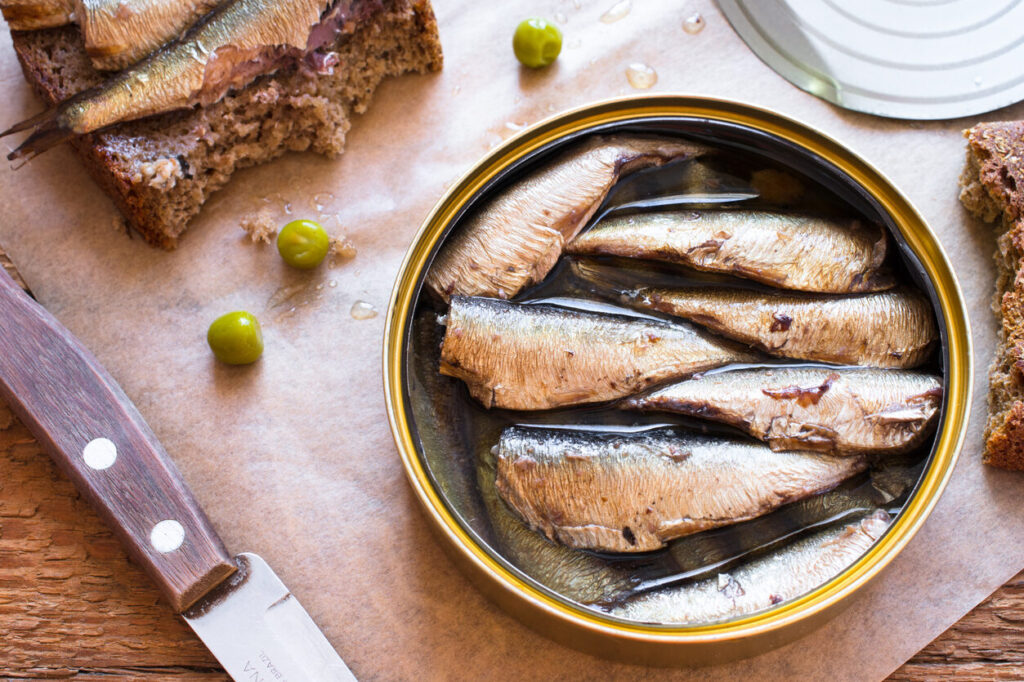
For much of the 20th century, sardines were the working man’s lunch. They came packed in dusty tins stacked on pantry shelves, always a little too fishy and a little too salty. Soldiers ate them during wartime. Factory workers unwrapped them in breakrooms. They were cheap, oily, and best eaten quickly. Few would have ever called them elegant.
Today, sardines are having a full-blown renaissance. Artisanal brands in Portugal and Spain now hand-pack them in extra-virgin olive oil, often with lemon peel, piri-piri peppers, or even truffle essence. They’re sold in boutique shops and wrapped in foil like jewelry. Served with crusty bread, good butter, and a glass of chilled white wine, they are now an appetizer worth bragging about. Foodies line up for limited-edition tins. Sardines have jumped from blue-collar lunchboxes to high-end grazing boards. Their glow-up is nothing short of extraordinary.
7. Tripe
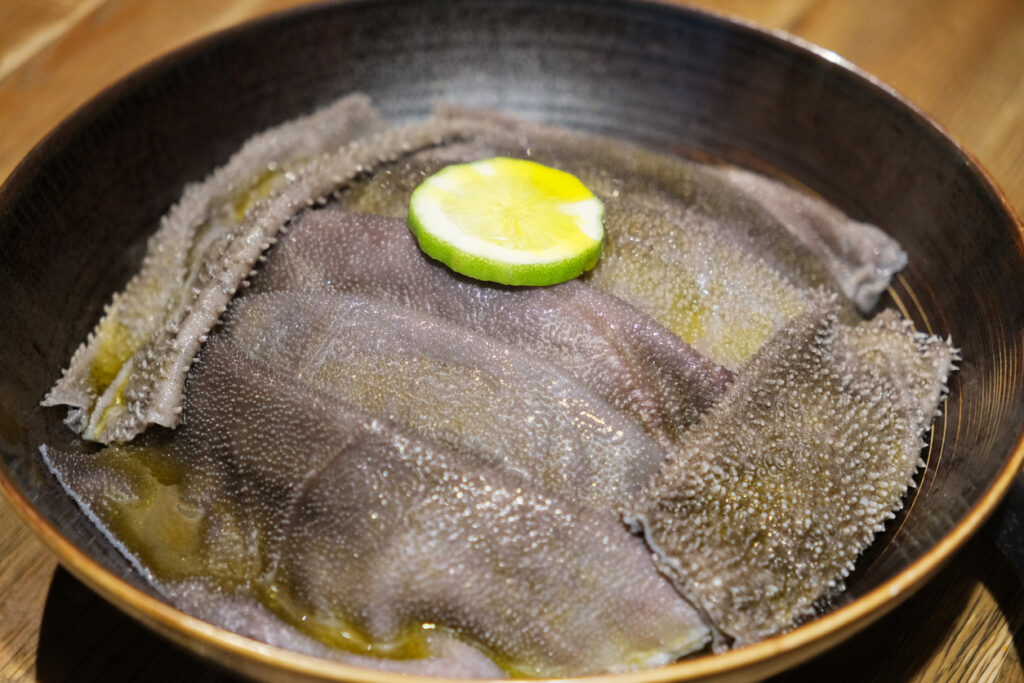
Tripe was never about glamour. It was survival food, plain and simple. Made from the lining of a cow’s stomach, it required serious cleaning and even more patience. Many cultures boiled it, stewed it, or spiced it heavily to mask the chew and funk. If you grew up with it, you respected it. If you didn’t, chances are you avoided it altogether.
But that’s changing. Tripe has become a bold move for chefs wanting to showcase heritage and culinary skill. In places like Rome, Seoul, and Mexico City, it’s being slow-cooked into traditional dishes that now show up on tasting menus. With the right seasoning and preparation, it delivers texture and depth that prime cuts just can’t match. What was once dismissed as scraps now speaks to authenticity and respect for the whole animal. Tripe isn’t trying to be trendy. It just is.
8. Collard Greens
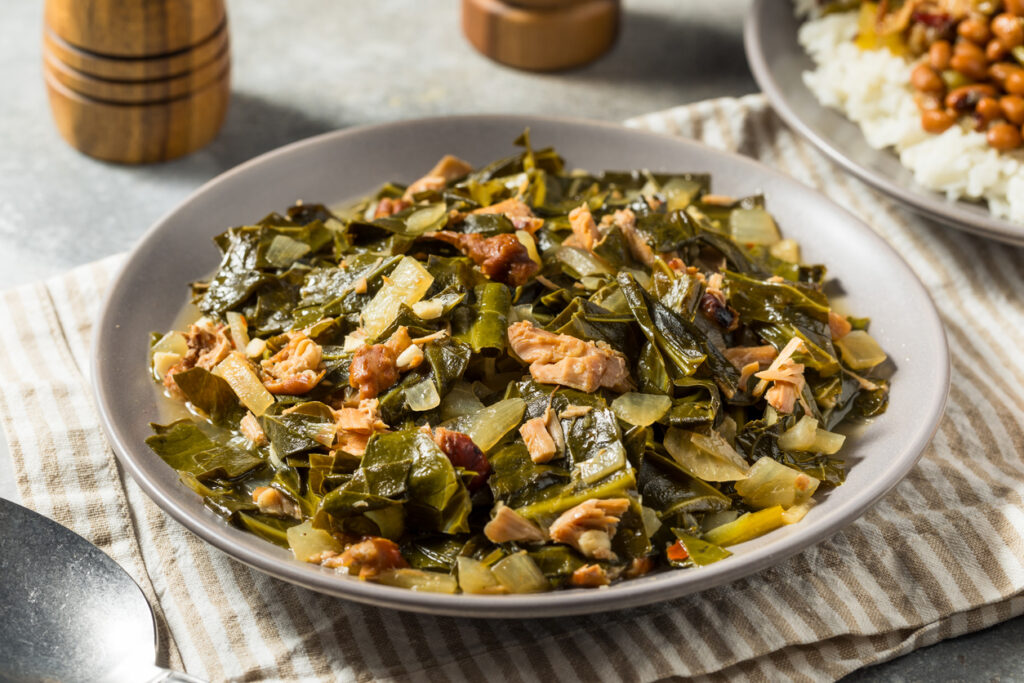
Collard greens have long roots in struggle and strength. They were cooked low and slow by enslaved Africans in the American South, often simmered with scraps of meat or a ham hock if one could be found. During the Great Depression, they were one of the few greens people could grow and eat year-round. Collards were comfort, not luxury. They were passed down through generations without ever getting fancy.
Now, they’re showing up in unexpected places. Celebrity chefs are tossing them with sesame oil or pairing them with burrata and citrus zest. Collards are being chiffonaded, flash-fried, and served in hip downtown restaurants beside duck breast or scallops. They’re being rebranded not as rustic, but refined. The story has changed, but the roots remain. What once fed families in times of hardship now feeds a movement toward honoring soul food with the respect it has always deserved.
9. Beets
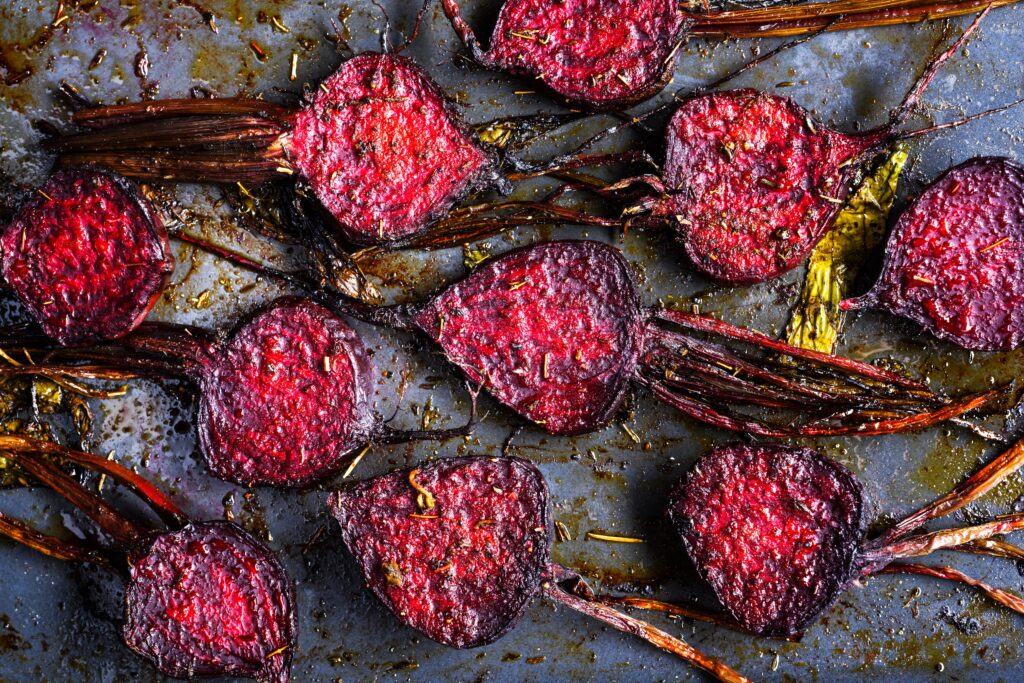
For centuries, beets were grown to feed livestock, not people. When they did make it onto the table, it was often pickled and pushed to the side, staining everything it touched. The flavor was earthy in a way many found too intense. The texture was often mushy. Beets were cheap, messy, and not exactly photogenic.
Now they’re the jewel of every farm-to-table menu. Roasted until caramelized, pureed into vibrant soups, or paired with goat cheese and pistachios, beets have gone from livestock filler to gourmet hero. Chefs love their color, their sweetness, and their ability to stand out on a plate. They’ve become the star ingredient in salads that cost more than a steak once did. Once ignored for being too humble, beets now get their own spotlight. It’s a root vegetable redemption story.
10. Pork Belly
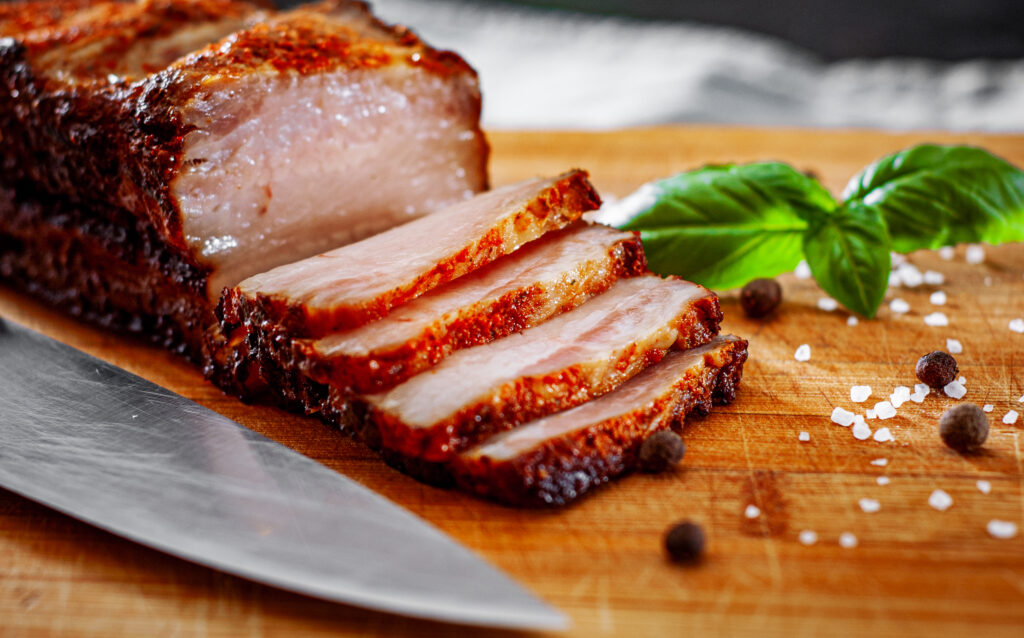
For years, pork belly was treated like culinary excess. Too fatty, too rich, too cheap to bother with. It was usually salted and smoked into bacon or braised in home kitchens where economy mattered more than elegance. Most diners never saw it whole. It was hidden in soups, sauces, or the back pages of cookbooks.
But once chefs figured out how to crisp the skin and render the fat just right, pork belly exploded onto the foodie scene. It’s now plated in neat rectangles, brushed with maple glaze or soy reduction, and served with pickled vegetables or silky purees. The texture is addictive, the flavor explosive. Food lovers seek it out like treasure. What was once overlooked for being too greasy is now celebrated for being rich in every sense of the word. Pork belly didn’t just get fancy. It got famous.
11. Duck Fat
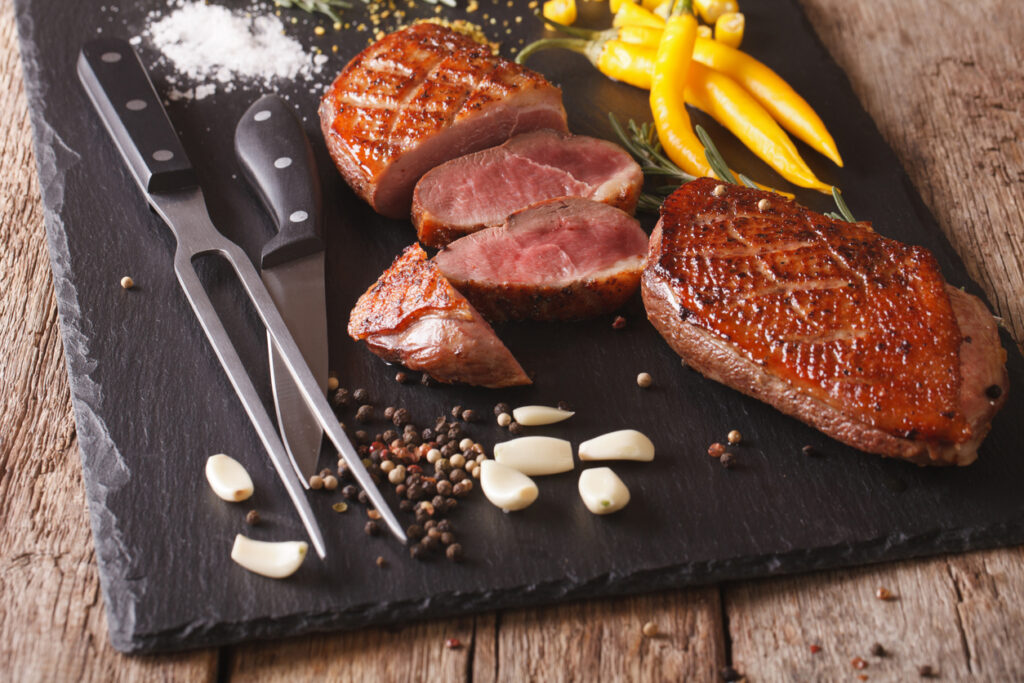
Duck fat used to be just kitchen runoff. After roasting a duck, thrifty cooks would pour off the golden drippings and store them in jars out of habit, not reverence. It was a byproduct, not a prize. In rural kitchens across France and Eastern Europe, it was used to fry potatoes or enrich a pot of beans. It wasn’t romanticized, just reused. There were no gourmet labels or curated jars, only grease and gratitude. People saved duck fat because nothing could be wasted, not because it was trendy.
Now it’s practically liquid luxury. Artisanal producers sell duck fat in glass jars with elegant labels and farm provenance, often nestled next to truffle oil and aged balsamic. Chefs praise its rich flavor and high smoke point, calling it their secret to perfectly crisped potatoes and flaky pie crusts. Duck fat fries have become a menu staple in upscale gastropubs, and home cooks seek it out for special holiday roasts. Its savory aroma now signals indulgence instead of necessity. What was once reused out of necessity is now purchased intentionally, celebrated for doing what butter only dreams of.
12. Mussels
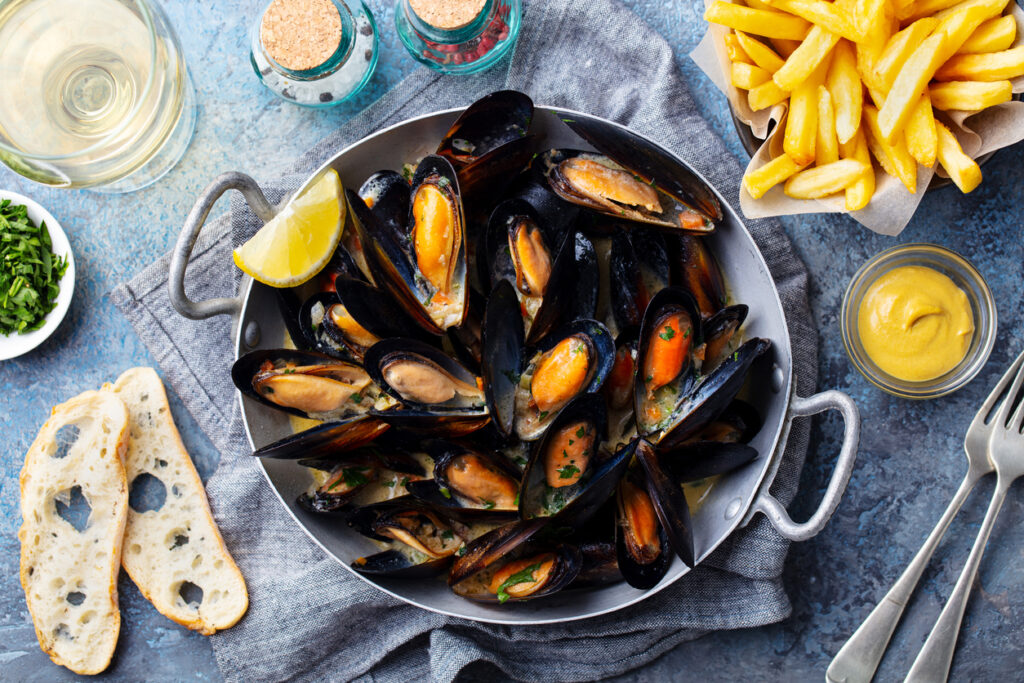
Mussels were once the kind of food you ate because the tide brought them in. They clung to rocks and piers, and coastal families gathered them by hand during lean times. Cheap, abundant, and overlooked, mussels were dismissed as poor man’s shellfish. Fishermen often used them as bait. They were tossed into stews to bulk them up, not to elevate them. If you lived inland, chances are you never saw one on your plate. They were nourishment, not delicacy.
Now they grace the tables of candlelit bistros and seaside resorts alike. Steamed in white wine with garlic and herbs, mussels are served in cast iron pots with crusty bread for dipping. They’re paired with Belgian fries, coconut curry, or saffron broth. Some chefs top them with foam or edible flowers. Diners debate the merits of Prince Edward Island versus Mediterranean varieties. The same bivalves once given away by the bucket are now ordered with wine pairings and side sauces. They’ve gone from survival food to social-media-worthy starter. Mussels never changed, but our appetite for them certainly did.
13. Skirt Steak
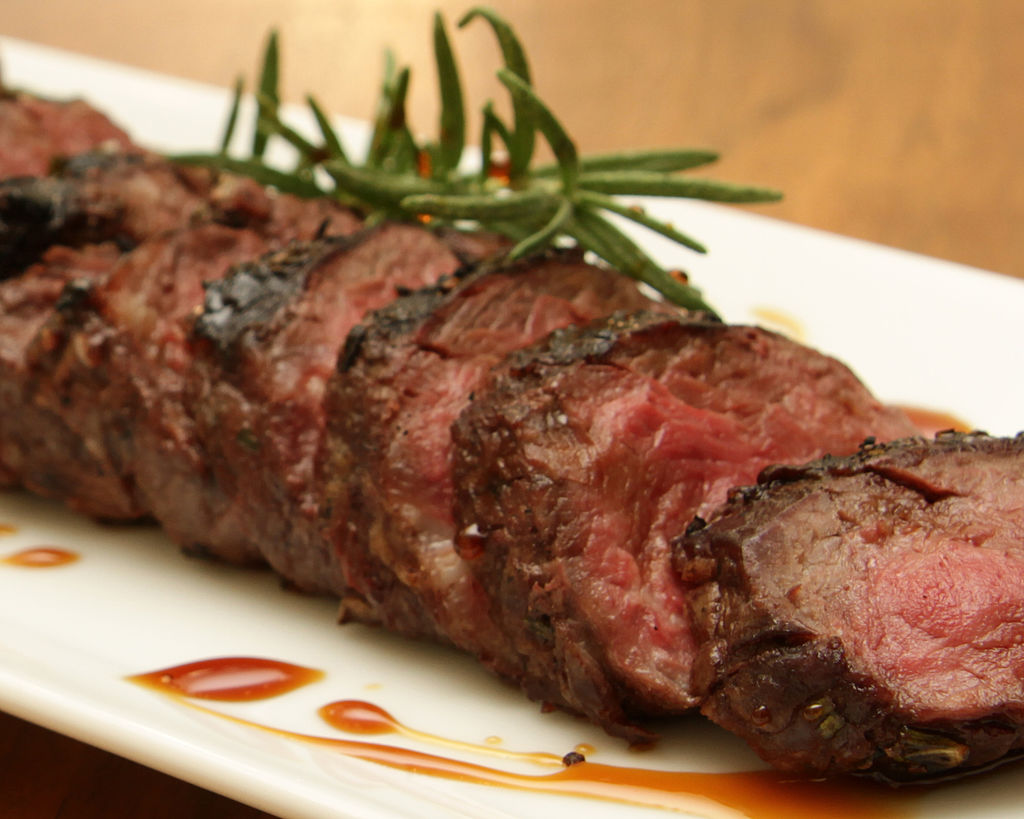
Skirt steak was the butcher’s consolation prize. It was stringy, full of connective tissue, and stubbornly chewy if not marinated just right. Most customers didn’t even ask for it, so butchers took it home and made fajitas or stir-fry. It was beloved in working-class communities, especially among Latinx and Asian families who knew how to coax flavor from overlooked cuts. Still, it remained on the fringes of fine dining. It was meat, but not the kind that got its own carving station.
Now, chefs and steak lovers alike sing its praises. Skirt steak is prized for its bold, beefy flavor that pairs well with chimichurri, bourbon glazes, or even smoked sea salt. It’s no longer hidden in marinades, but grilled to medium-rare and sliced against the grain for maximum tenderness. You’ll find it on upscale menus, often paired alongside roasted fingerlings or spicy aioli. It has gone from secondary to signature. Restaurants charge premium prices for what used to be almost free. This once-ignored cut now commands respect and reservations.
14. Octopus
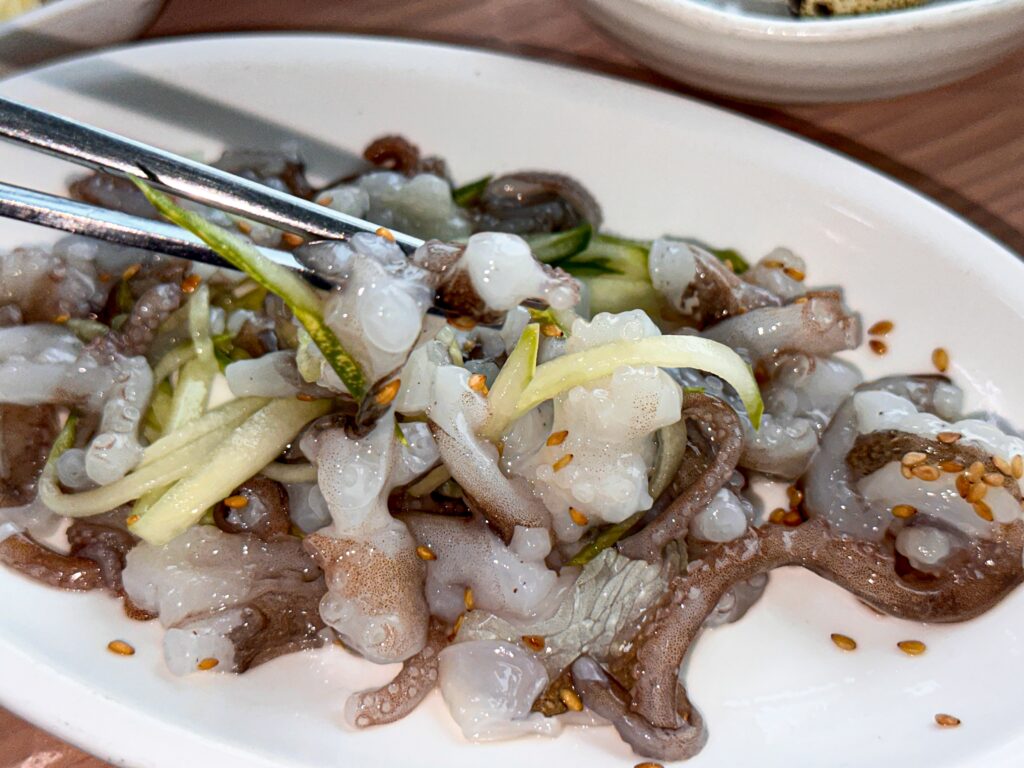
Octopus wasn’t always welcome on the plate. Many diners found it off-putting with its suction cups, inky color, and tendency to turn rubbery if overcooked. In coastal villages across the Mediterranean and Asia, it was eaten out of necessity and respect for the ocean’s full bounty. It was dried on clotheslines, boiled into anonymity, or hidden in stews. In the West, most people passed it by without a second thought. Too chewy, too strange, too much.
But today, octopus is a culinary flex. When properly tenderized and chargrilled, it becomes smoky, succulent, and complex. It’s now featured in multi-course tastings, often plated with harissa, aioli, or charred citrus. Chefs drizzle it with infused oils or plate it artfully with dots of purée. It’s both dramatic and delicate. Once rejected for being unfamiliar, octopus is now embraced as the height of sophistication. It brings global flair and kitchen skill together on one tentacled dish. The creature that once drew raised eyebrows now draws critical acclaim.
15. Cauliflower
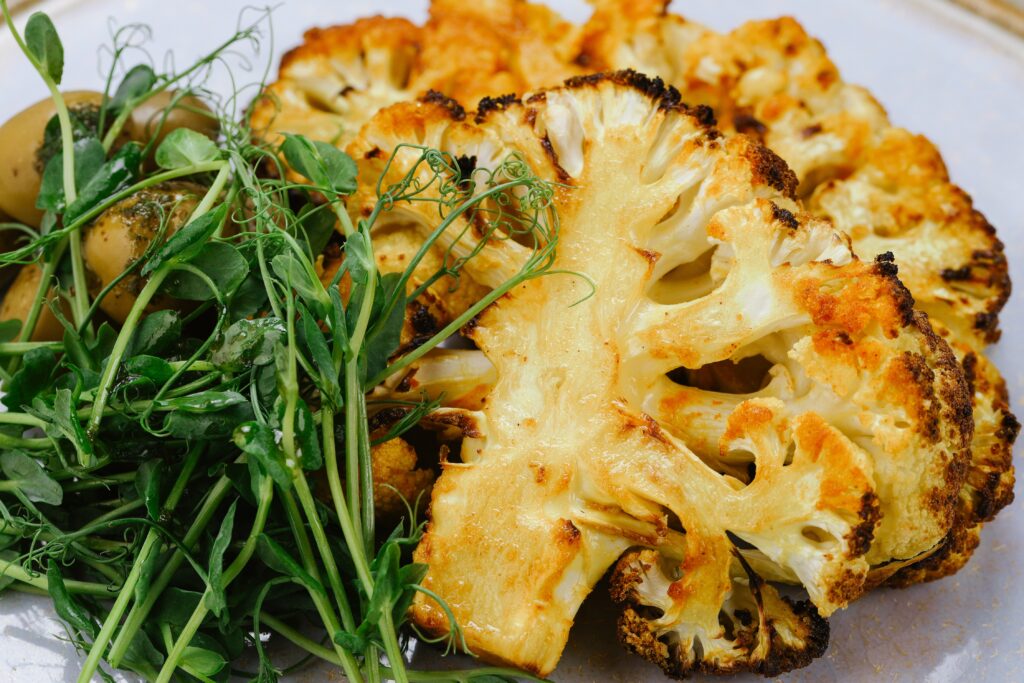
Cauliflower spent decades in culinary exile. It was boiled into mush or buried under a blanket of bland cheese sauce. People ate it only because they were told it was good for them. It was the color of wallpaper paste and carried about as much excitement. In lunchrooms and family dinners, it was a side dish no one reached for twice. For years, cauliflower was a vegetable with no ambition. It was a supporting act with no spotlight.
Now, it’s having the last laugh. Cauliflower has become a chameleon of fine dining and health-forward cuisine. It’s roasted whole with golden spice rubs, turned into velvety purées, and even sliced into steaks and grilled with tahini drizzle. Vegan chefs love it. Paleo followers worship it. Michelin-starred restaurants serve it with flair, garnished with nuts, herbs, and pomegranate seeds. Cauliflower has gone from boring to beautiful, bland to bold. Once avoided, now adored, it finally got its close-up.
16. Turnips
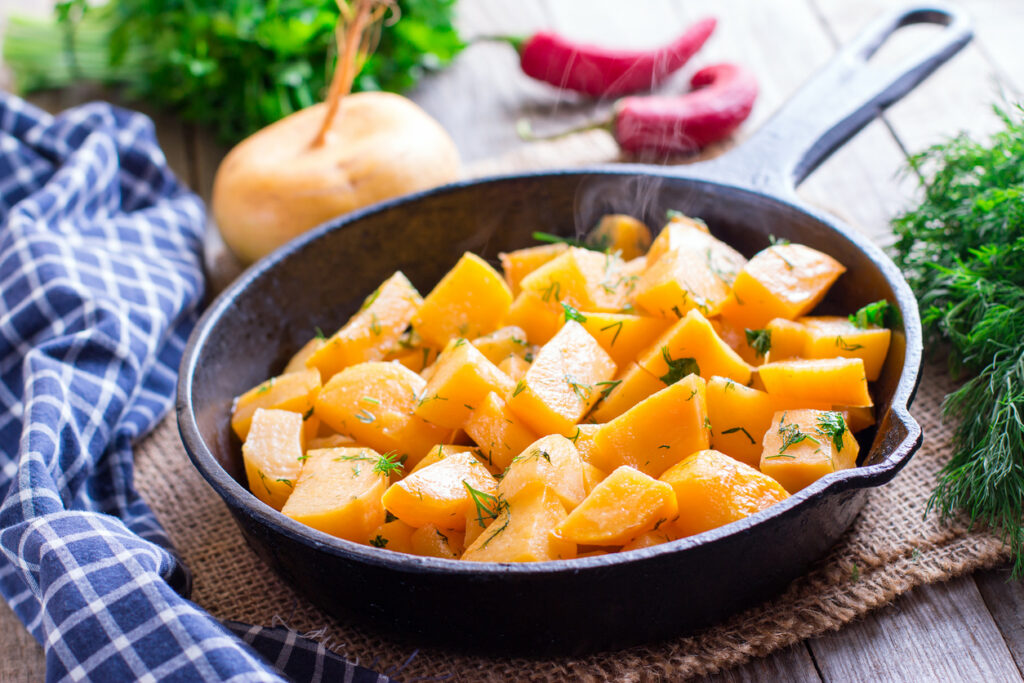
Turnips were long considered desperation food, especially in rural Europe and early America. They grew easily in poor soil and cold weather, making them a staple for families with little else to eat. In times of war or famine, turnips replaced meat, bread, and even potatoes. They were boiled into flavorless stews, mashed with lard, or simply roasted until soft. The bitterness made them a tough sell, and they earned a reputation as something you ate only when you had no other choice. Even livestock often turned up their noses at them. Turnips were survival, not satisfaction.
But today, they’ve shaken off their wartime past. Modern chefs are treating them with care, glazing them in honey, roasting them alongside duck, or folding them into creamy purées with herbs and butter. Young turnips are praised for their subtle sweetness and delicate texture. Some menus even highlight heirloom varieties by name, like Tokyo Cross or Hakurei. Their bitterness, once dreaded, is now appreciated as a contrast to rich sauces and proteins. The turnip has gone from trench food to table centerpiece. It’s a reminder that with the right technique, even hardship can taste like elegance.
17. Head Cheese
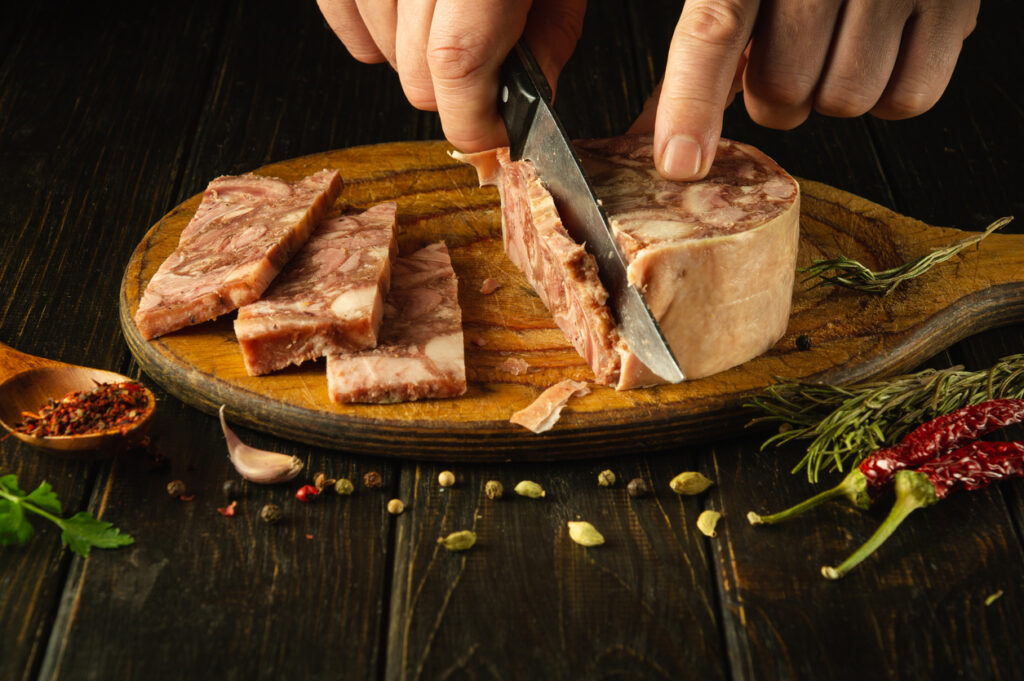
Head cheese might be the most misunderstood item on this list. It’s not a cheese at all, but a terrine made from the head of a pig, simmered until the meat, skin, and collagen melt into a gelatinous sliceable loaf. It was born out of old-world frugality, the idea that every single part of an animal should be used. In rural kitchens, it was made out of necessity, pressed into pans and chilled for preservation. It looked strange, wobbled on the plate, and was never served with ceremony. It was, frankly, an acquired taste.
Now, head cheese is having a boutique butcher moment. Charcuterie boards at upscale restaurants feature delicate slices beside stone-ground mustard, cornichons, and crusty bread. It’s made with heritage pork and seasoned with cloves, garlic, or even wine. The texture, once ridiculed, is now described as silky and rich. Chefs take pride in honoring nose-to-tail traditions, and diners post photos of it like it’s foie gras. What was once considered peasant jelly is now a badge of culinary respect. Head cheese didn’t become fashionable by changing, it became fashionable because we finally caught up to it.
18. Sweetbreads
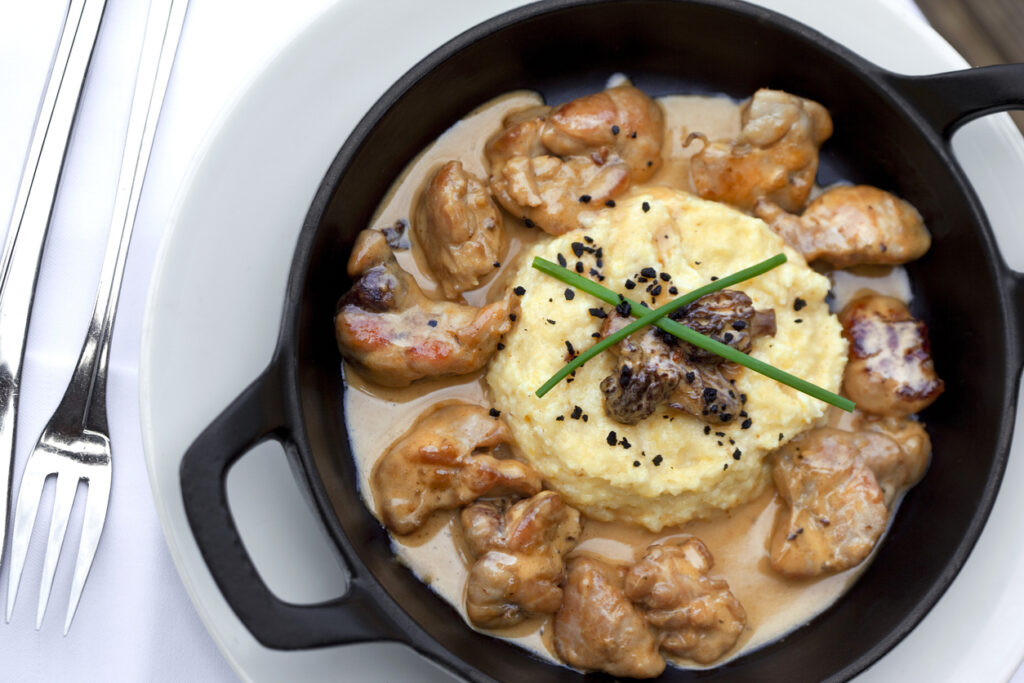
For generations, sweetbreads were the odd cuts no one wanted to name. Technically the thymus or pancreas of a young calf or lamb, they were often tossed aside by butchers or sold for pennies. In old European kitchens, they were breaded and fried or tucked into rich sauces, but few outside those traditions embraced them. Their texture was soft, their flavor delicate, but their origin made many squeamish. Sweetbreads were the kind of thing your grandfather ate and your friends teased you for liking. They were hardly considered gourmet.
Now, they’re one of the most elegant appetizers in haute cuisine. Chefs treat them with reverence, soaking and blanching them before crisping them in butter or olive oil. When done right, they melt in your mouth with a flavor somewhere between cream and nut. Served with morels, demi-glace, or truffle foam, sweetbreads command both respect and a steep price. They’re a culinary litmus test; order them, and the chef knows you’re serious. Once a hidden organ, sweetbreads now bask in fine dining’s spotlight. They have gone from forgotten offal to luxury delicacy without changing a thing but the context.
19. Anchovies
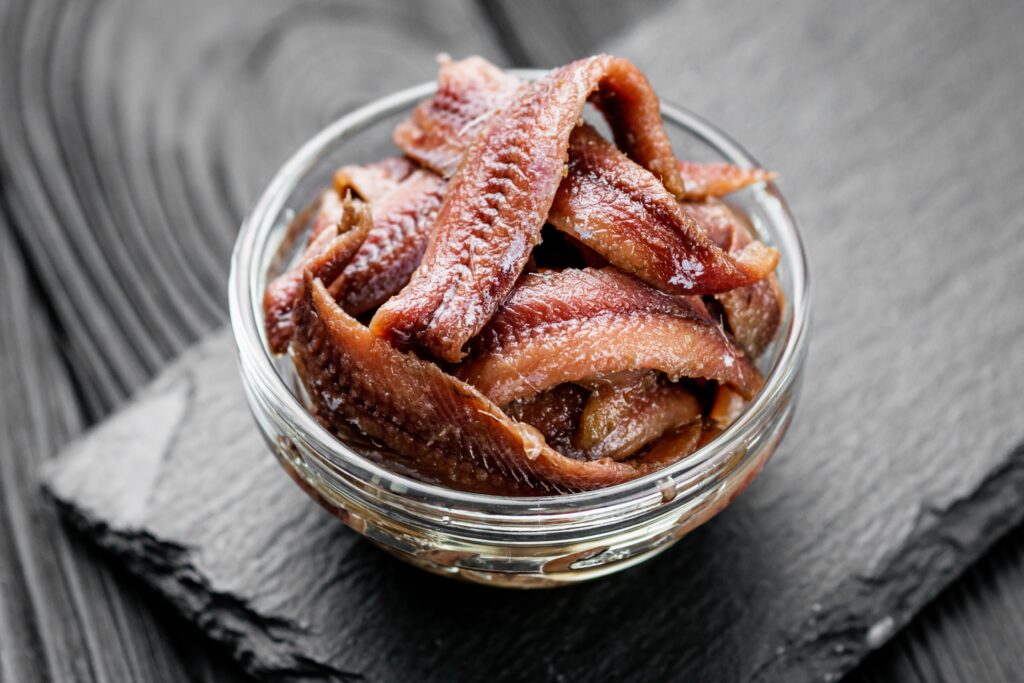
For decades, anchovies were the culinary joke that wouldn’t die. People made faces at them on pizza, poked fun at them in cartoons, and scraped them off Caesar salads like they were poison. Packed in brine and reeking of the sea, anchovies were cheap, over-salted, and rarely used with care. They were associated with bad delivery food and bachelor pantries. Few people appreciated them, and even fewer knew how to use them properly. To many, they were a fishy mistake in a tin can.
Today, anchovies are a secret weapon in fine dining. Carefully cured and packed in olive oil, the best varieties come from Spain or Italy and melt like butter on the tongue. Chefs use them to build umami in sauces, marinades, and dressings. One fillet can transform a dish without ever being seen. On toast with butter, in pasta with garlic and breadcrumbs, or blended into vinaigrettes, anchovies are suddenly sophisticated. Food lovers brag about their favorite brands like wine labels. From punchline to powerhouse, anchovies have reclaimed their salty crown.
20. Sea Urchins (Uni)
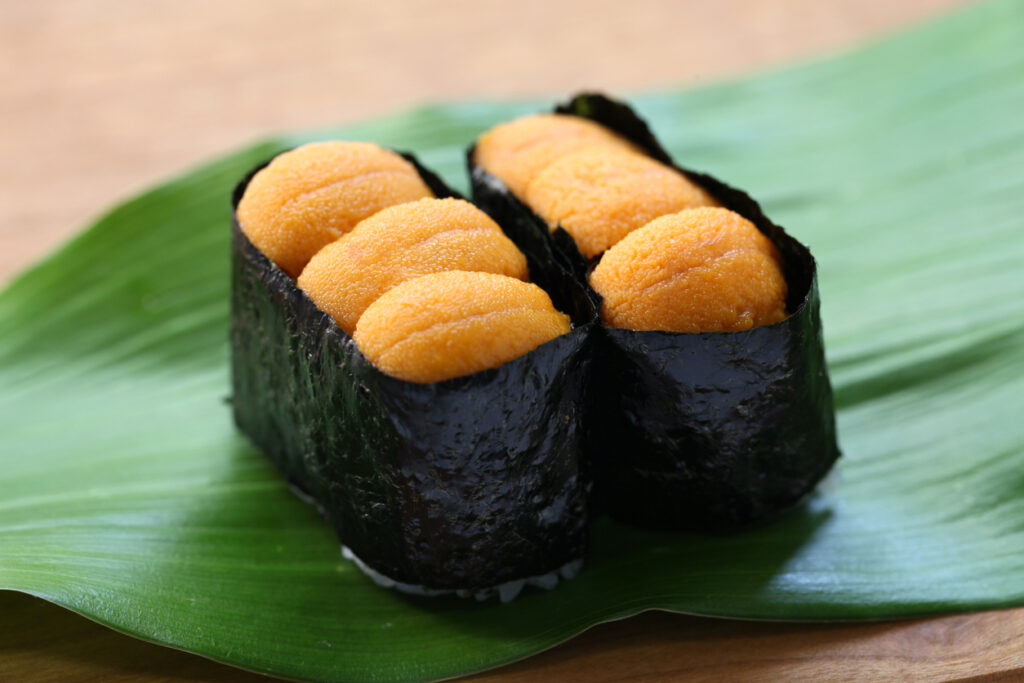
Sea urchins were once foraged out of desperation. In coastal fishing towns, people dove for them when nothing else was biting. The spiny shells were cracked open by hand to reveal a few golden tongues of roe. The taste was intense, briny, creamy, and vaguely sweet. For many, it was too strange to stomach. Sea urchins were food for the desperate, not the decadent. They were eaten fresh on rocks, not served at sushi bars.
Now, uni is one of the most luxurious bites you can order. It appears on high-end tasting menus and is sold by the gram in sleek, chilled containers. Top sushi chefs in Tokyo and New York serve it with minimal garnish to highlight its natural flavor. It’s spooned over rice, nestled in pasta, or paired with caviar in extravagant dishes. The texture, once divisive, is now described as silky and divine. Uni has become a delicacy for those who crave the ocean in its purest form. What was once scraped from tidepools is now reserved for those with the finest taste.
21. Cabbage
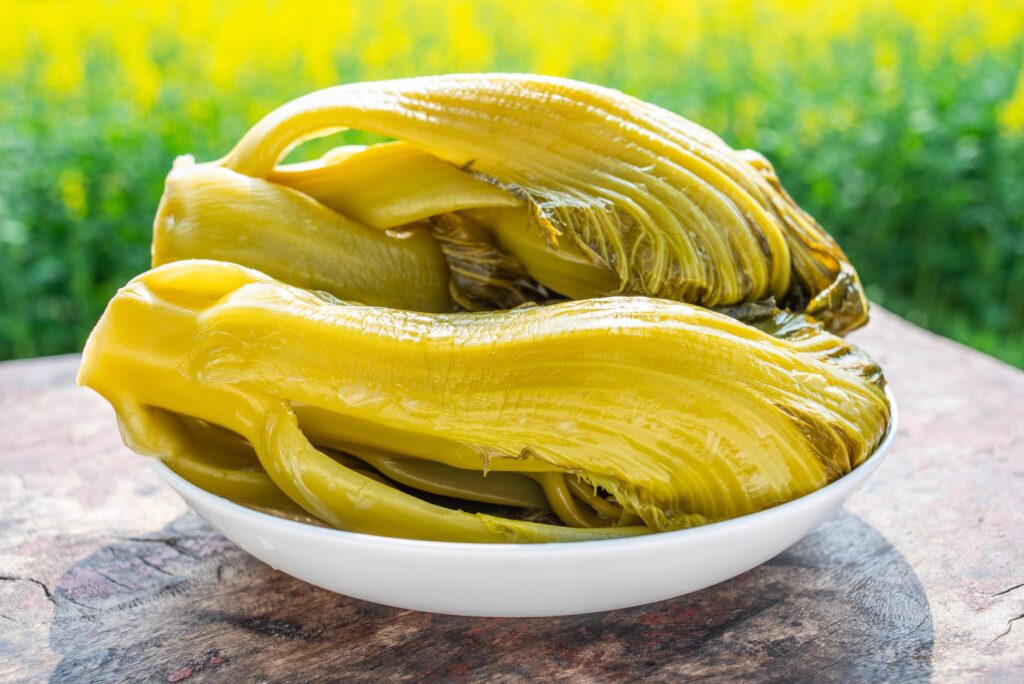
Cabbage has always been the quiet workhorse of the kitchen. In lean times, it was boiled, braised, or fermented to stretch meals and feed large families. It showed up in wartime stews, immigrant tenements, and Dust Bowl casseroles. It didn’t need pampering to grow and wasn’t picky about where it was planted. There was nothing flashy about it, just layers of toughness and practicality. People cooked with cabbage because they had to, not because they wanted to. It was the kind of vegetable you ate and forgot.
But that’s no longer the case. Today, cabbage is getting roasted in wedges until caramelized, then topped with fancy sauces like miso glaze or tahini drizzle. It’s shaved raw into delicate salads with citrus and herbs, or turned into smoky slaws on gourmet sandwiches. Restaurants charge good money for it now, especially if it’s purple or savoy. Chefs love how it absorbs flavor and holds its structure. From Eastern European comfort food to Asian small plates, cabbage is everywhere and finally getting the attention it deserves. The same vegetable once boiled to blandness is now bursting with creativity.
22. Kimchi
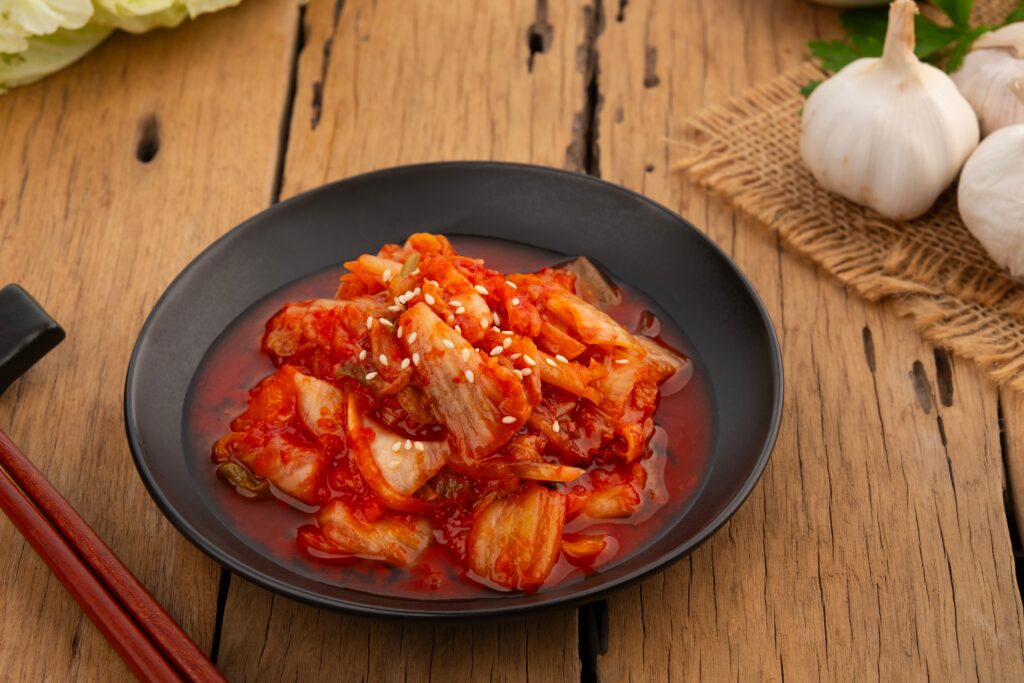
Kimchi began as a necessity. Korean households made it in giant batches during the winter, packing spicy fermented cabbage into clay pots and burying them underground to preserve food when nothing else would grow. The smell was strong, the flavor stronger, and outsiders often found it overwhelming. But for generations of Korean families, it was a source of warmth, pride, and survival. It was eaten with every meal, no matter how simple or sparse. Still, outside of Korea, kimchi was misunderstood for decades. Most people couldn’t get past the funk.
Now, chefs around the world can’t get enough of it. Kimchi is folded into grilled cheese, layered on gourmet burgers, and plated with pork belly at fusion restaurants. It’s praised for its depth, probiotics, and ability to elevate bland food with just one scoop. Small-batch jars are now sold at farmers’ markets, labeled with batch numbers and regional chili peppers. What was once considered too pungent is now a mark of culinary cool. Kimchi didn’t adapt to us. We adapted to kimchi.
23. Avocados – From Peasant Spread to Brunch Royalty
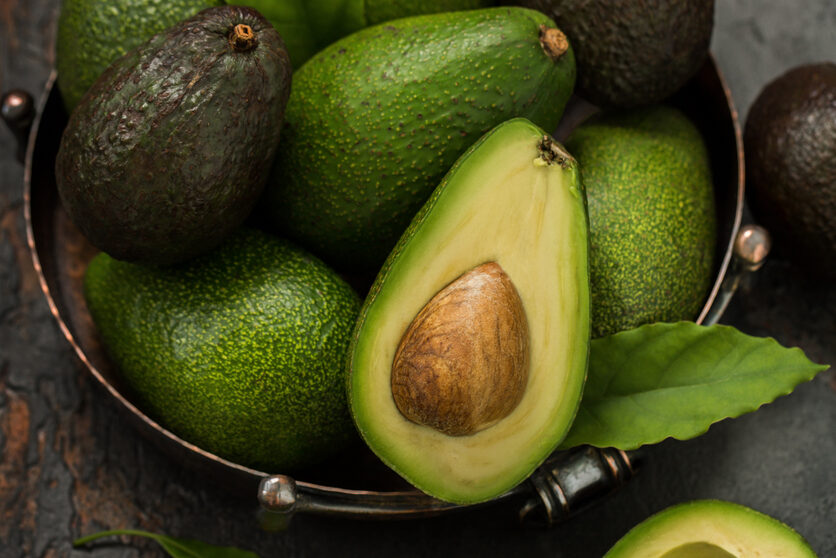
Avocados were once nicknamed “poor man’s butter” in early 20th-century California. They grew in abundance, were cheap, and served mostly as a practical, fatty spread. Today, they’ve become a must-have on brunch menus, starring in gourmet toasts, smoothie bowls, and health-focused diets. With a creamy texture and heart-healthy fats, they’ve gone from overlooked backyard fruit to Instagram-famous superfood. As The Washington Post put it, “The avocado is no longer a sidekick, it’s the main event.” Prices have soared with demand, and now this former budget staple graces $20 breakfast plates. It’s a quiet reminder that humble foods, with the right spotlight, can rise to cultural royalty and stay there for generations to come.
24. Brussels Sprouts – From Soggy Side to Crispy Crave-Worthy
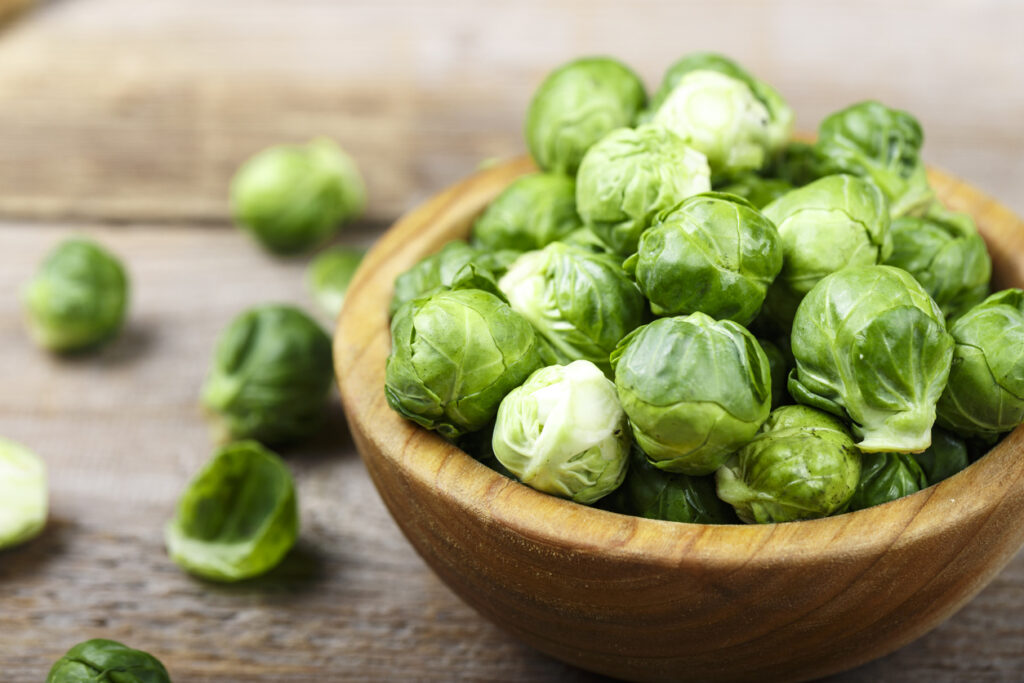
Brussels sprouts once had a reputation as the vegetable kids dreaded. Often overboiled into mush, they were bitter, bland, and barely seasoned. Now they’ve taken center stage on restaurant menus, roasted until crisp and tossed in flavorful sauces with balsamic, maple, or parmesan. The shift came from chefs who discovered that a good sear brought out their natural sweetness. As Bon Appétit explained, “We didn’t hate sprouts, we just hated how they were cooked.” Today, they’re served alongside steaks or as small plates with gourmet touches. From forgotten side dish to crispy crowd-pleaser, these tiny cabbages prove that technique can completely change how we taste the past.
25. Fish Collars – Grilled Gold from the Fish Bin
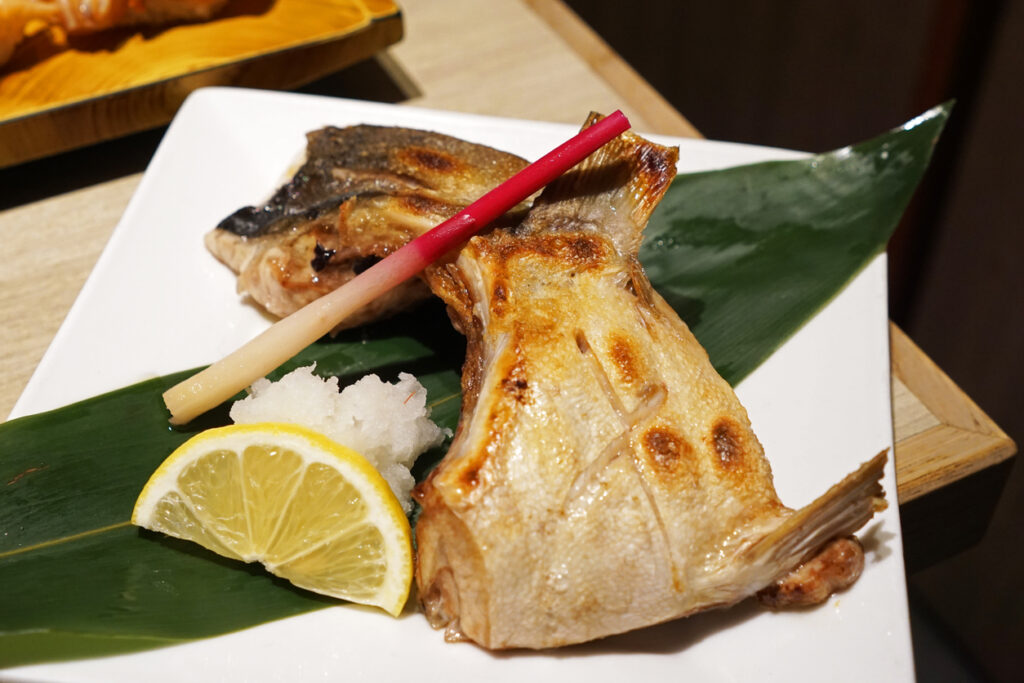
Fish collars were once scraps left behind after filleting. Most people tossed them or used them in broth. But in Japanese and Filipino kitchens, they were treasured for their rich, fatty meat and crispy skin. Chefs later brought this cut to fine dining, grilling hamachi or salmon collars until tender and serving them with ponzu or yuzu. As Serious Eats noted, “The collar is one of the most flavorful parts of the fish.” Now they appear on tasting menus and upscale izakayas. From discard to delicacy, fish collars found their glow-up not through reinvention, but through reappreciation. Turns out, there’s always gold hiding in the places no one thought to look before.
26. Beef Cheeks – Braised Beauty from Butcher’s Castoffs
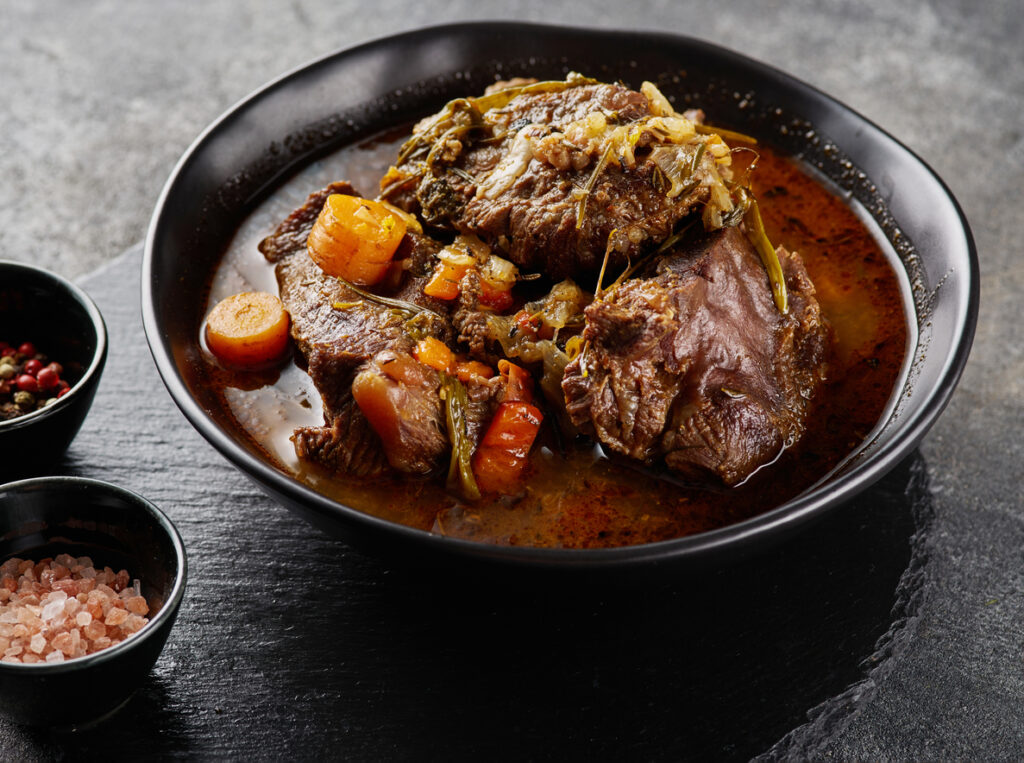
Beef cheeks were once regarded as a tough, undesirable cut, better suited for stew pots in working-class kitchens than for white tablecloths. Their transformation came through slow, careful cooking that melts away their toughness, revealing deep flavor and velvet texture. Braised in wine or stock, they’ve become a highlight on menus at Michelin-starred restaurants. Chef Fergus Henderson championed their rise, saying, “Cheeks are the proof that good things come to those who wait.” Once overlooked and sold cheaply, beef cheeks now appear in rich reductions beside creamy polenta or mashed potatoes. What was once scrappy is now celebrated, simply because someone finally took the time to treat it right.
27. Pig Ears – From Scraps to Crispy Gastropub Snack
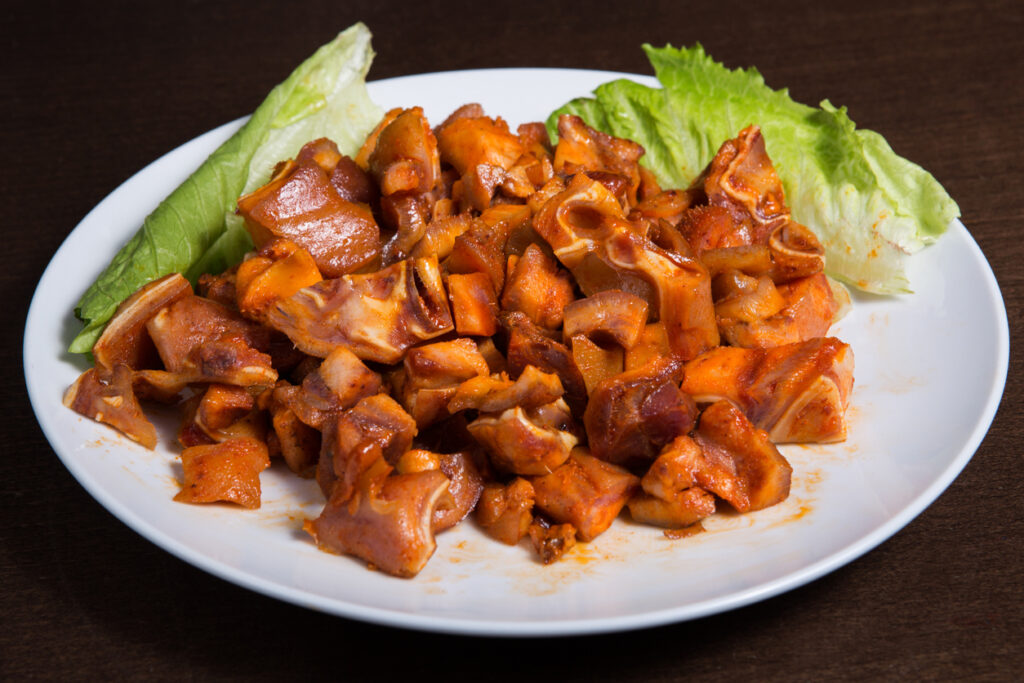
Pig ears were often seen as waste or given away as animal feed. In Southern U.S. kitchens and Asian street food stalls, they were fried until crispy or simmered for hours. Today, chefs deep-fry them into crunchy, savory chips served with aioli or spicy dipping sauces. David Chang described them as “texturally wild and incredibly flavorful.” Their chewy interior and crispy edges give a contrast that food lovers now seek out. From being the last resort in resourceful households, pig ears have found a new stage in gastropubs and upscale fusion restaurants. A little crunch and creativity took this forgotten part of the pig straight to the spotlight.
28. Pig Trotters – Gelatin Gold in Gourmet Kitchens
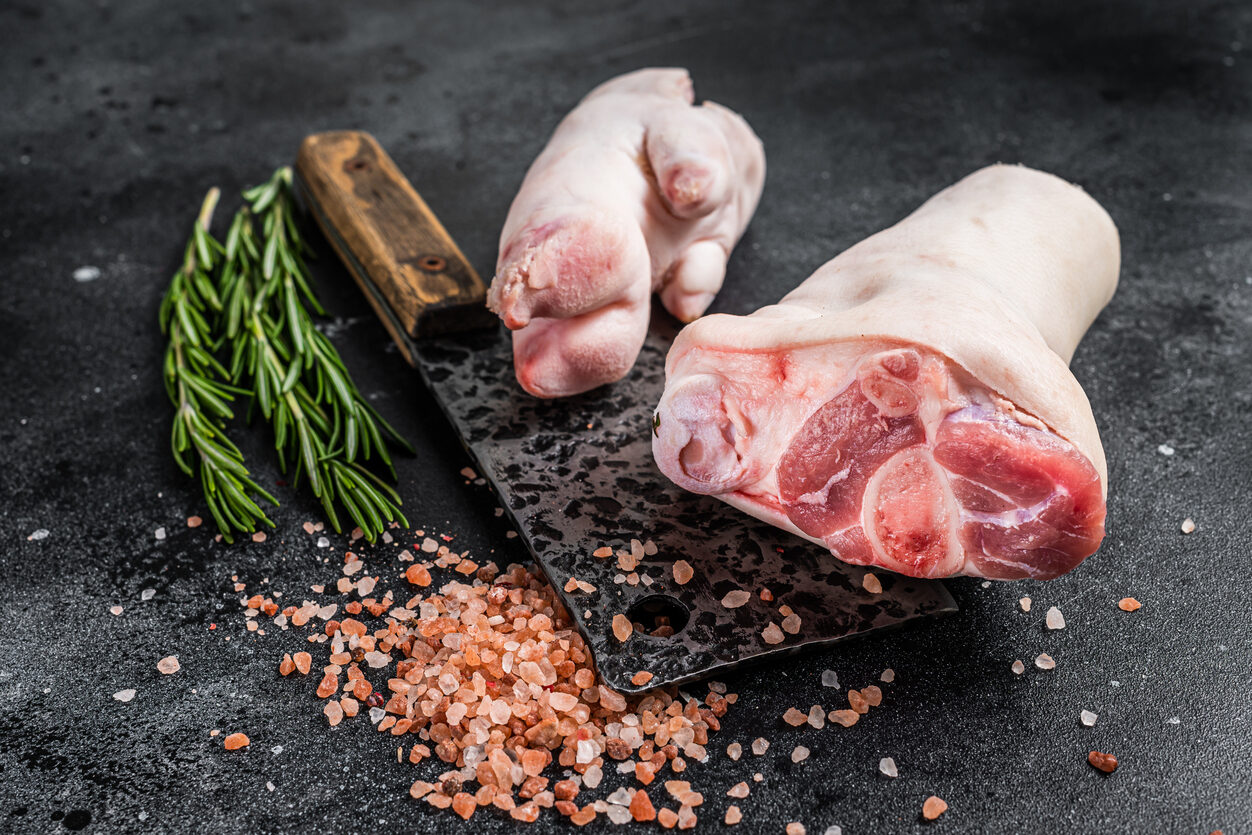
Pig trotters, or feet, were once boiled down for soups or stews in rural homes. Rich in gelatin and collagen, they were used out of necessity to add body to meals. Today, chefs use trotters to create silky sauces, elegant terrines, and deeply flavorful reductions. French cuisine gave them a new life, with trotters often stuffed or served alongside fine wine. Chef Fergus Henderson called them “the gateway to appreciating the whole animal.” Trotters have become a statement in nose-to-tail dining, symbolizing respect for every part of the animal. Once boiled for budget broth, they now shine on polished plates with intentional, savory flair.
29. Guanciale – Pork Jowl Now Essential for Luxury Carbonara
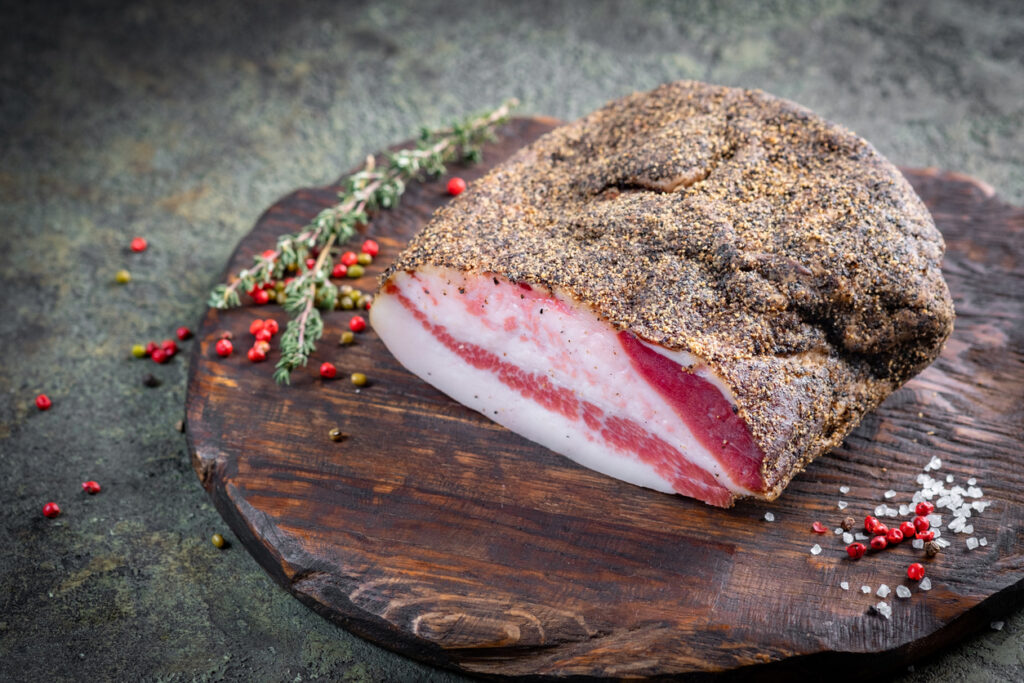
Guanciale, the fatty jowl of a pig, was once a home-cured meat found only in rustic Italian kitchens. Poor families would salt and dry it to preserve the rich, fatty cut for winter. Now, it’s the must-have ingredient in traditional Roman carbonara and amatriciana. Chefs favor its intense pork flavor and silky texture over bacon or pancetta. Food & Wine noted, “Without guanciale, carbonara isn’t truly Roman.” Once humble and homemade, it now flies across borders to gourmet pantries and Italian eateries around the world. This flavorful piece of pork went from local necessity to international obsession, proving that authenticity always has a seat at the table.
30. ’Nduja – Spicy Spread from Survival to Sophistication
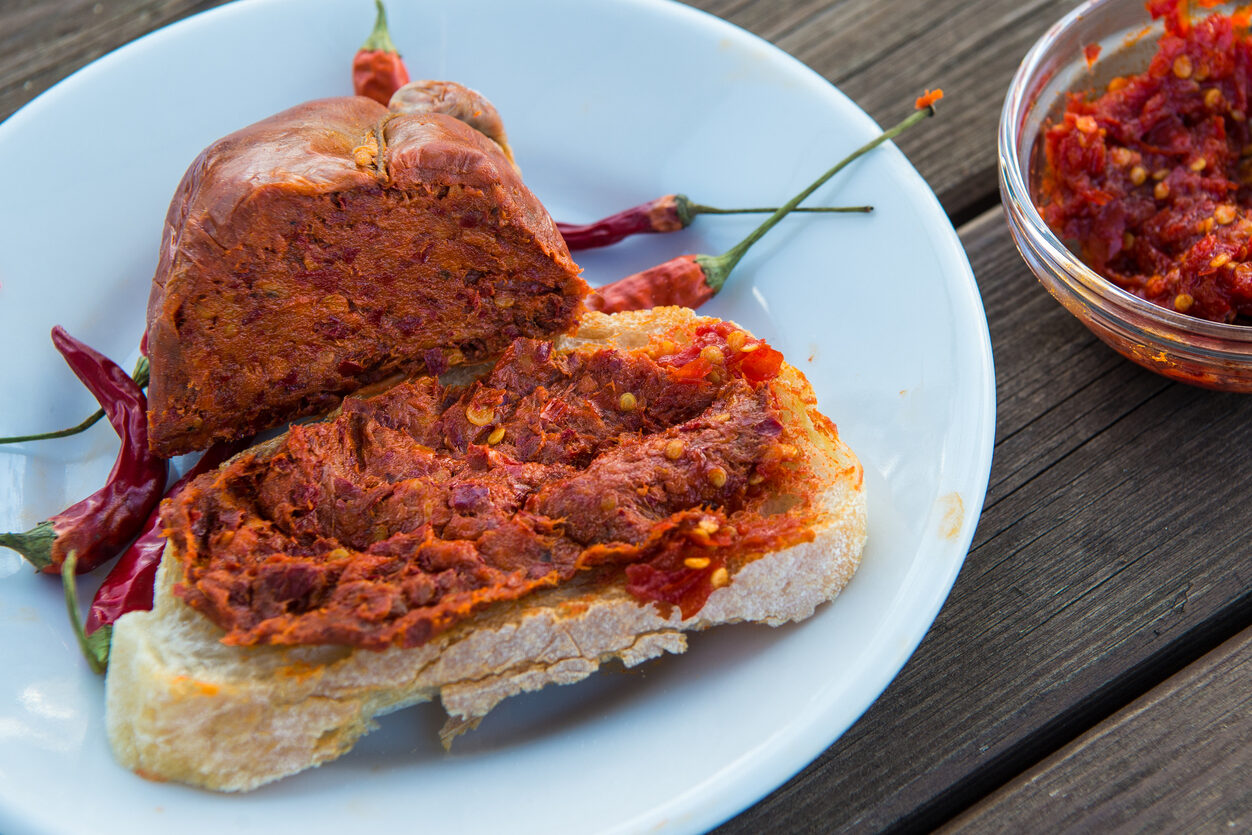
’Nduja is a fiery, spreadable pork sausage born in Calabria, Italy, where it was a peasant food made from pork scraps and hot chilies. Farmers made it to stretch every bit of meat they had, often storing it in jars for later. But now, this once-homemade preserve is showing up on wood-fired pizzas, bruschetta, and charcuterie boards in high-end restaurants. It adds bold flavor and depth wherever it lands. Bon Appétit called it “the sausage that changed how we cook.” From necessity to luxury, ’nduja has proven that flavor developed from scarcity can dominate modern cuisine in all the right ways.
31. Blood Sausage – Rich and Earthy from Barn to Bistro
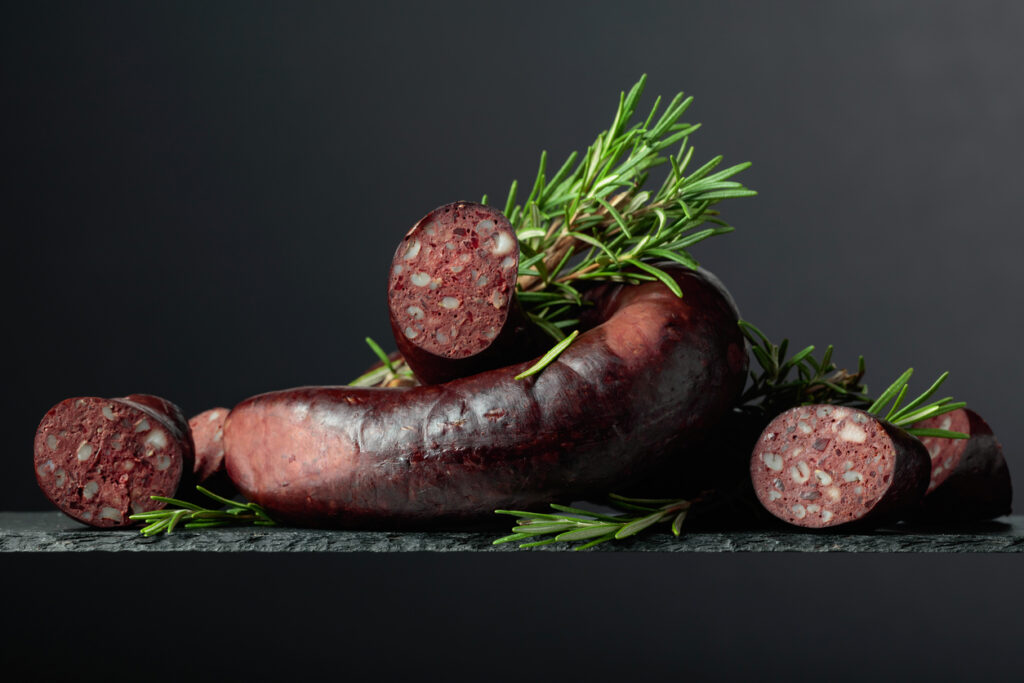
Blood sausage, or morcilla, has long been part of frugal cooking traditions in Europe, Asia, and Latin America. Made by combining animal blood with grains and spices, it was a way to ensure nothing went to waste. Once eaten mostly by working-class families and farmers, it’s now a star in gourmet charcuterie plates and brunch menus. Cooked well, it has a deep, earthy flavor that chefs admire. The Guardian called it “a delicacy hiding in plain sight.” From barnyards to bistros, blood sausage’s story reminds us that culinary treasures often come from places built on survival, community, and love for full-circle cooking.
32. Sunchokes – Ugly Roots Now Roasted with Style
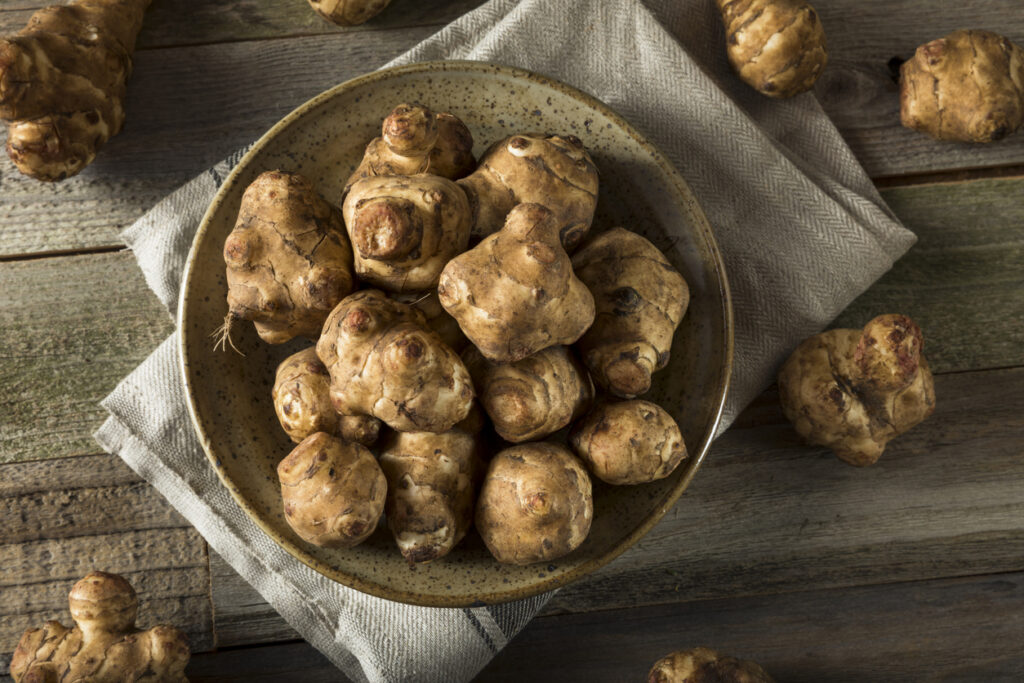
Sunchokes, also known as Jerusalem artichokes, once grew wild or were tucked away in gardens, viewed as too knobbly and unpredictable to be a staple. People avoided them due to their tough skins and reputation for causing digestive discomfort. But when roasted, they reveal a sweet, nutty flavor and creamy texture. Now, chefs serve them with truffle oil or pair them with fine cuts of meat. “They’re like a potato and an artichoke had a genius baby,” said Chef Amanda Cohen. What was once livestock feed or forgotten root is now plated like a prize. Even the gnarliest foods can find a seat at the top.
33. Zucchini Blossoms – Backyard Bloom to Fine Dining Favorite
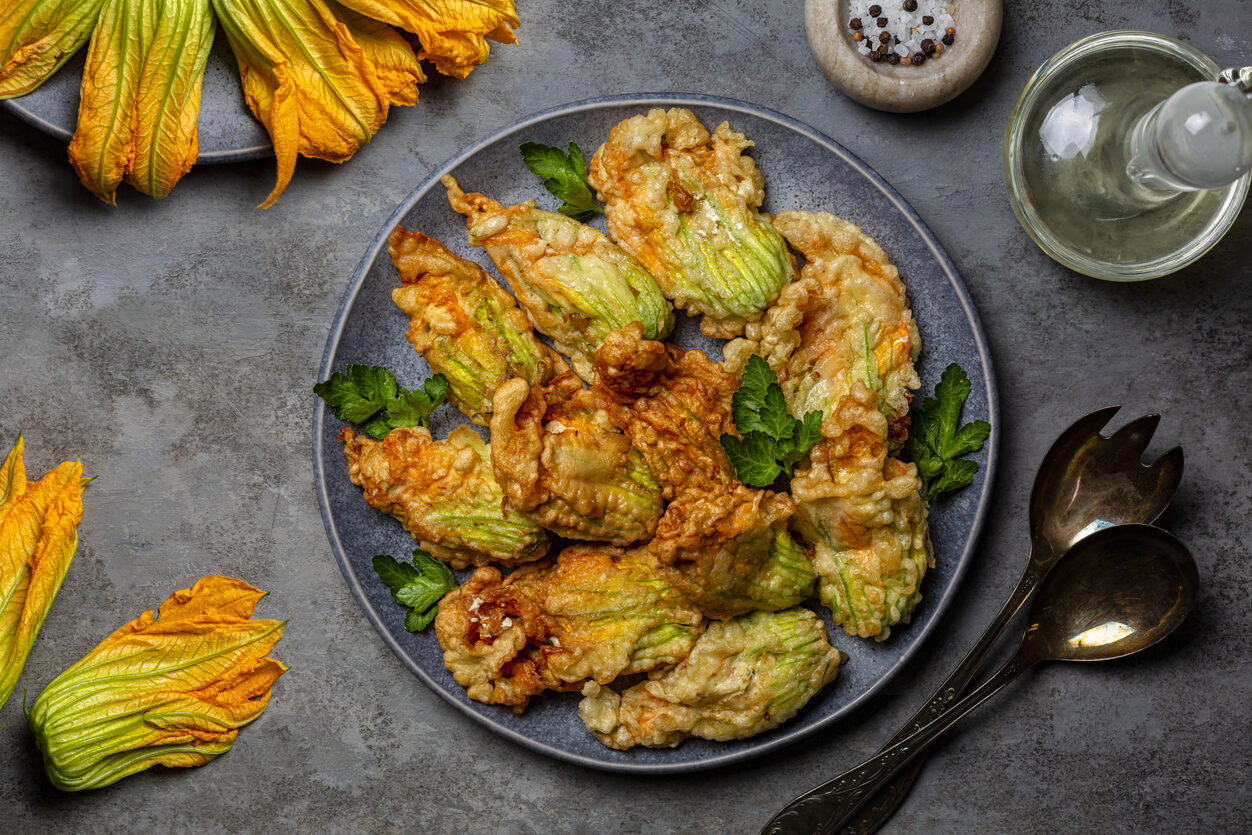
Zucchini blossoms were once just the fragile flowers from squash plants, quickly wilting and mostly tossed aside. In many home gardens, they were ignored or used casually in frying pans. Today, they’re treated as rare delicacies, stuffed with ricotta or goat cheese, lightly battered, and served golden on restaurant plates. Chefs value their short growing window and delicate flavor. As Saveur noted, “Zucchini blossoms are fleeting beauty on a plate.” No longer compost bin fare, they now carry price tags of $20 or more. These once-forgotten garden scraps prove that culinary elegance sometimes begins where no one thought to look. With care and timing, even a blossom can rise to star billing.
34. Panzanella – Crouton Salad Turned Tuscan Luxury
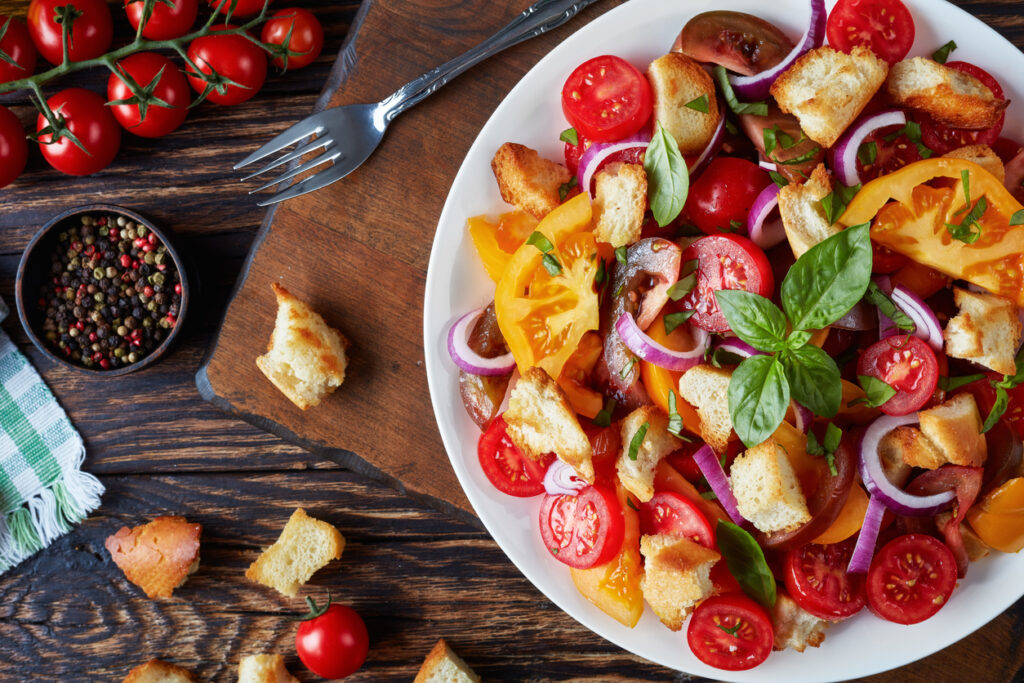
Originally a clever way to revive stale bread and overripe tomatoes, panzanella was born in the rustic kitchens of Tuscany. Farmers soaked hardened bread in water and vinegar, then tossed it with vegetables and olive oil to avoid waste. It was filling, affordable, and refreshing in the summer heat. Today, panzanella graces the menus of luxury Italian restaurants, dressed up with heirloom tomatoes, burrata, pickled onions, and microgreens. Bon Appétit called it “a lesson in making magic from leftovers.” It’s now a staple in culinary schools and tasting menus alike. From yesterday’s crusts to today’s gourmet centerpiece, panzanella is proof that flavor doesn’t always require fresh-from-the-oven bread.
35. Ribollita – Leftover Soup Now a Fine Italian Classic
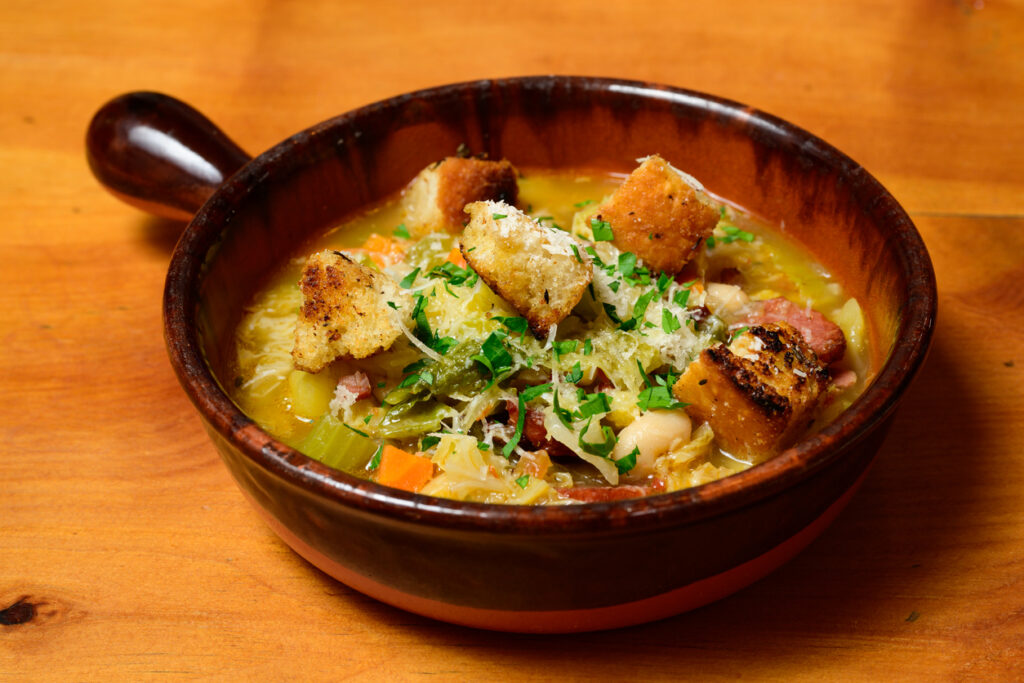
Ribollita, meaning “reboiled,” is a Tuscan soup originally made from reheating vegetable stew and mixing in old bread to bulk it up. Poor families relied on it to stretch limited ingredients across several meals. Each batch grew thicker and richer over time. Today, ribollita is revered as one of Italy’s classic comfort foods and is served with a swirl of olive oil and shavings of Parmigiano Reggiano in upscale trattorias. The New York Times described it as “a soup that tastes like home and history.” From peasant practicality to culinary pride, ribollita has become a warm, flavorful symbol of Italian ingenuity and hospitality on even the most elegant tables.
36. Congee (Jook) – From Simple Porridge to Luxe Bowl
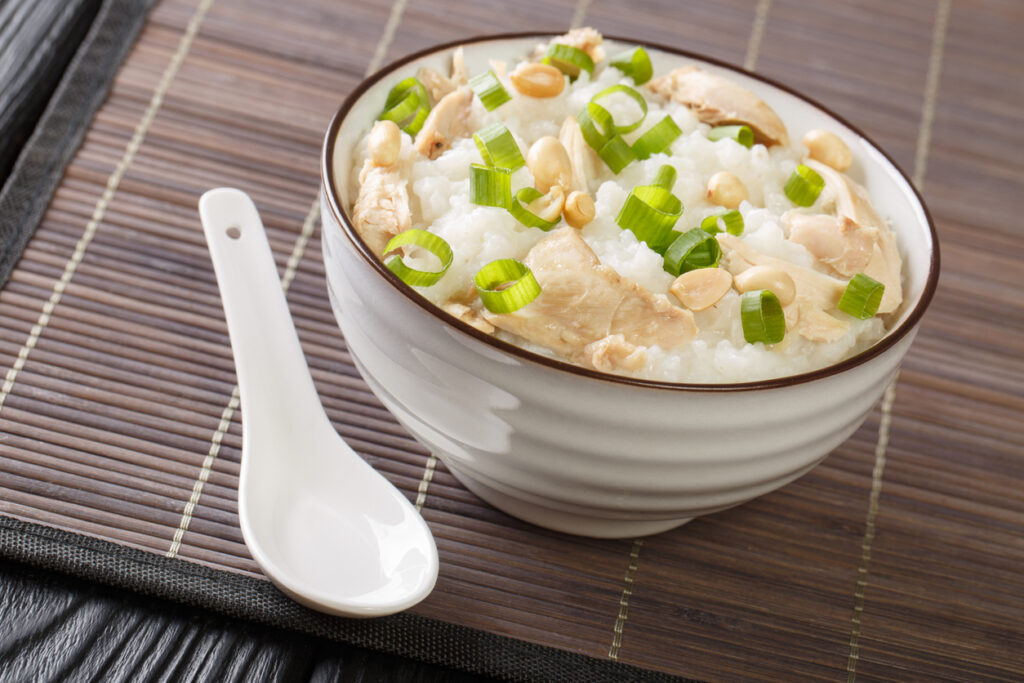
Congee, or jook, is a rice porridge found in many Asian cultures, originally prepared to make a small amount of rice feed more people. It was common in households during illness or hardship, often flavored with little more than salt or ginger. Today, congee has found new life in fine dining, topped with truffle oil, soft-boiled eggs, seafood, or duck confit. Chef Brandon Jew of San Francisco’s Mister Jiu’s said, “Congee isn’t just comfort food, it’s personal.” What began as a bowl of modest warmth is now plated with artistic flair. Its transformation shows how even the simplest recipes can rise through thoughtful presentation and timeless cultural pride.
37. Plantains – Street Staple to Crispy Plate Star
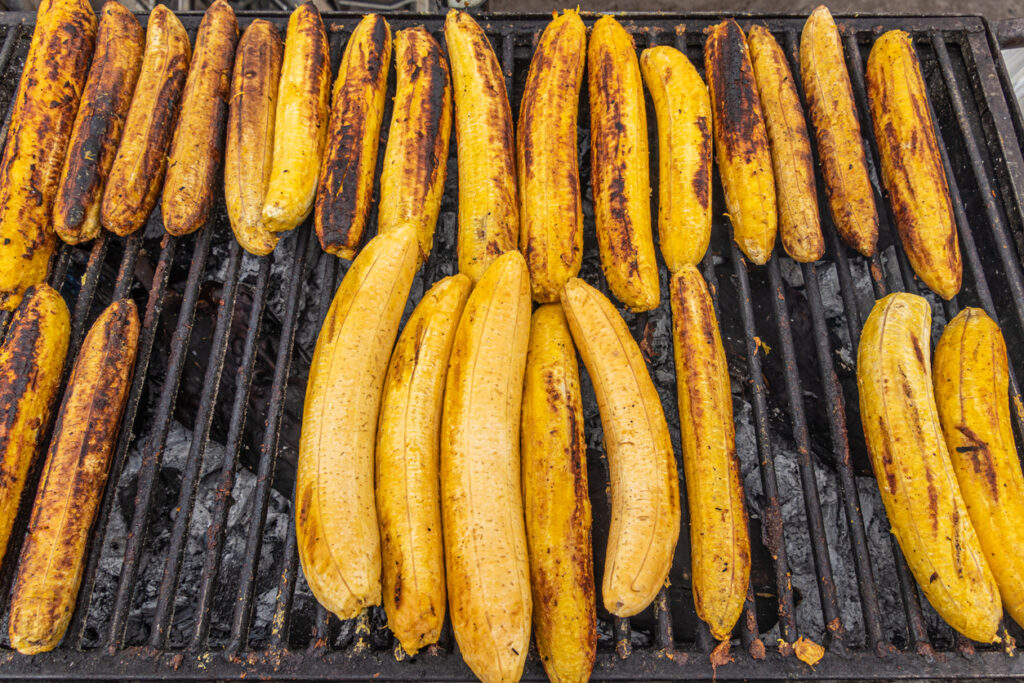
Plantains have long been a staple across West African, Caribbean, and Latin American households. Fried, boiled, or mashed, they provided an affordable, filling base or side dish for everyday meals. Street vendors sold them in simple paper wraps or with rice and beans. Now, plantains are found in trendy restaurants, elevated as tostones with dipping sauces or sweetened and paired with grilled meats. Chef José Andrés praised their versatility, calling them “one of the most exciting ingredients on a modern plate.” Once associated with street food and home kitchens, plantains are now gourmet favorites. Their bold flavor and cultural roots make them as meaningful as they are delicious.
38. Farro – Ancient Grain with New-World Glow
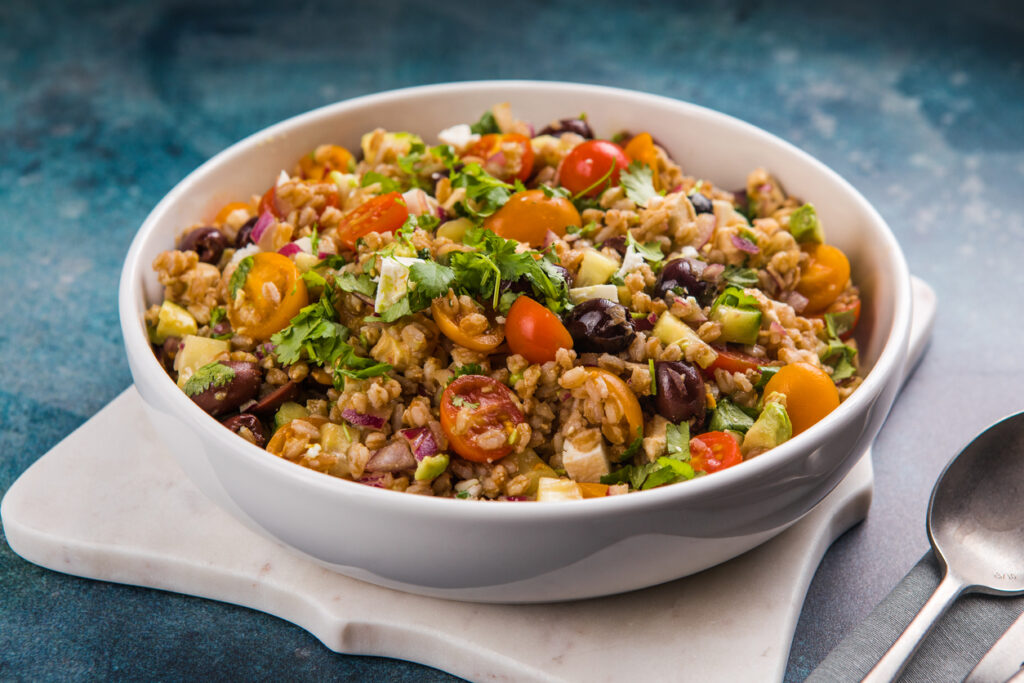
Farro, an ancient grain dating back to Roman times, once fed armies and peasants alike. It was grown for its heartiness, ease of storage, and ability to fill empty stomachs. For centuries, it remained a humble staple, replaced in modern diets by processed grains. But chefs and health-conscious eaters rediscovered it for its nutty flavor and chewy texture. Now, it stars in grain bowls, risottos, and salads topped with roasted vegetables and herb oils. The Kitchn called farro “a secret weapon in the modern kitchen.” From forgotten grain to trendy menu item, farro’s journey proves that ancient simplicity can be a perfect fit for today’s refined tastes.
39. Herring – Pickled Pantry Fish Turned Nordic Fine Dining

Herring, often pickled or salted, was once a pantry essential in Europe, especially in coastal and working-class communities. Preserved to last through long winters, it wasn’t considered glamorous but was highly practical. Today, chefs across Scandinavia and beyond have elevated herring into artfully plated bites. In places like Noma in Copenhagen, herring is paired with creamy sauces, rye crisps, and fresh herbs. Food critics have called it “an ode to survival turned into elegance.” From brine jars to gourmet tasting menus, herring shows how tradition can be celebrated when framed with care. What once filled bellies now fills tables with intention and a story worth tasting.
40. Smoked Mackerel – Oily Fish Turned Boutique Delight
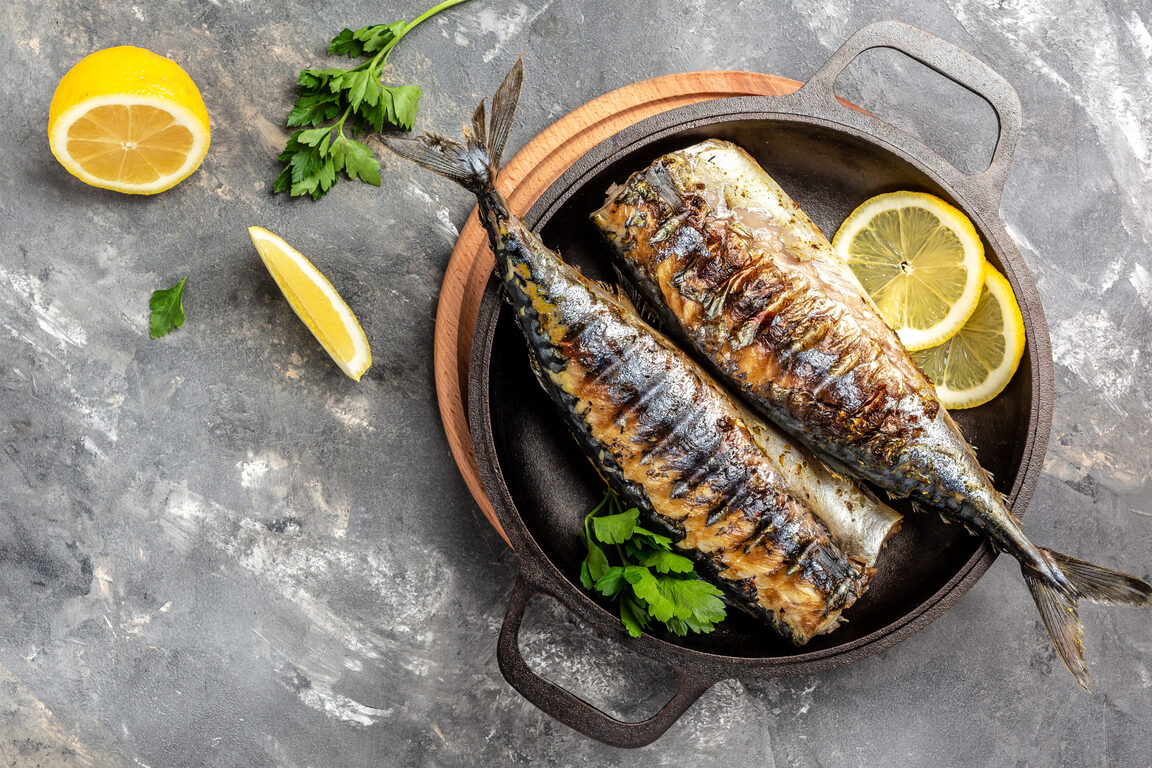
Mackerel was once known as a cheap, oily fish with a strong flavor that wasn’t widely appreciated outside coastal towns. It often ended up smoked and eaten quickly or used in budget meals. But smoking brought out its richness, and chefs began to see its potential. Today, smoked mackerel appears in boutique restaurants, paired with beetroot purées, fresh herbs, or horseradish creams. The Guardian called it “the fish that finally got its due.” High in omega-3s and packed with flavor, it now appeals to diners who seek both nutrition and taste. Mackerel’s rise proves that affordable food can become premium when preparation meets respect.
41. Tinned Mussels and Razor Clams – Shelf Food Turned Chic

Tinned mussels and razor clams were once considered survival pantry items. Cheap and long-lasting, they offered nutrition during hard times but carried little culinary prestige. That changed with Spain and Portugal’s conservas culture, where high-quality seafood is carefully tinned and presented with pride. Now, these tins sell for up to $30 and are served at wine bars and upscale restaurants with crusty bread and olive oil. Chef Katie Button said, “It’s not about the tin, it’s about the care behind what goes in.” Once basic shelf items, tinned seafood is now a symbol of slow food, tradition, and mindful eating celebrated around the world.
42. Lentils – Budget Beans Now Smooth and Fancy
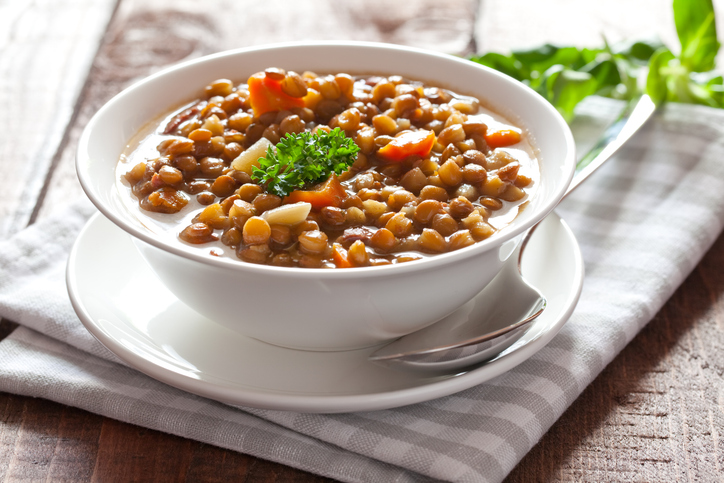
Lentils were once a staple for those seeking an affordable source of protein and fiber. Across South Asia, the Middle East, and Europe, they were often turned into soups, stews, or daals to feed large families. Now, lentils are found in elegant dishes, puréed into creamy sides or tossed in citrusy vinaigrettes at high-end vegetarian bistros. Chef Yotam Ottolenghi said, “Lentils are proof that simplicity can taste extravagant.” Nutrient-rich and versatile, they’ve become a favorite of modern chefs who appreciate their earthy flavor and hearty texture. Lentils show that what once fed the many now delights the few, with every bite steeped in humble origins.
43. Ratatouille – Farmhouse Stew Becomes French Art
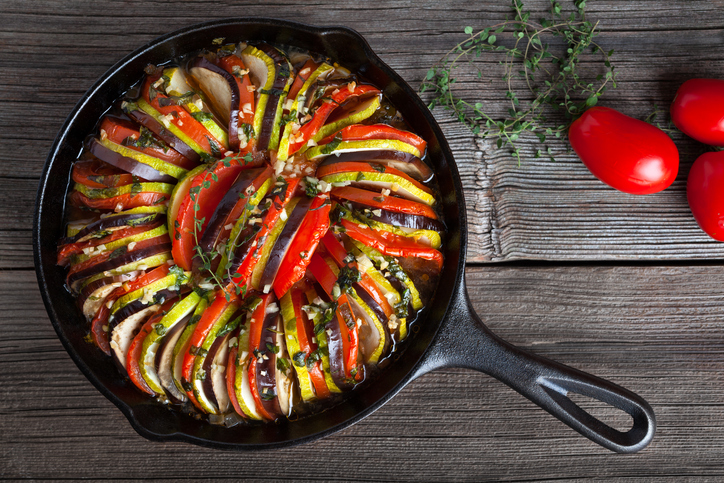
Ratatouille began as a peasant dish from Provence, made by slow-cooking the most overripe vegetables in olive oil. It was resourceful cooking at its best, using zucchini, tomatoes, eggplant, and onions that might otherwise be discarded. Today, it is a French culinary icon, sometimes arranged like a mosaic and baked to perfection. Chef Thomas Keller even inspired the version featured in Pixar’s “Ratatouille,” bringing new fame to the dish. As The New York Times noted, “Ratatouille is proof that beauty can grow out of necessity.” From rustic bowl to visual feast, this vegetable stew shows that love, time, and attention make all the difference.
44. Foraged Mushrooms – Once Free, Now a Gourmet Goldmine
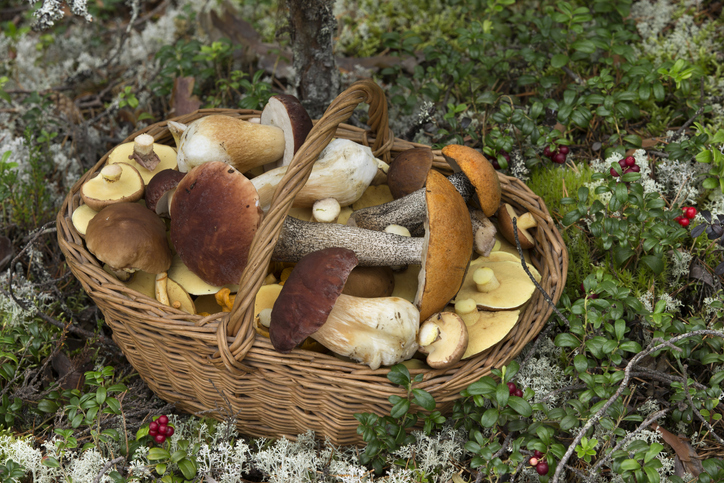
Foraging for mushrooms was once a necessity, especially for those who lived near forests and needed to stretch their meals. Chanterelles, morels, and porcini were collected without cost but required knowledge and care. Today, these wild mushrooms are worth up to $40 per pound and are featured in fine dining around the globe. Their earthy flavor and delicate texture make them a favorite in sauces, risottos, and omelets. Chef Alice Waters said, “Mushrooms connect us to the land.” From humble origins as forest finds, they now star in seasonal menus. Their story is one of nature’s generosity, now served with reverence on elegant plates.
45. Bread Pudding – Leftovers Baked into Rich Comfort
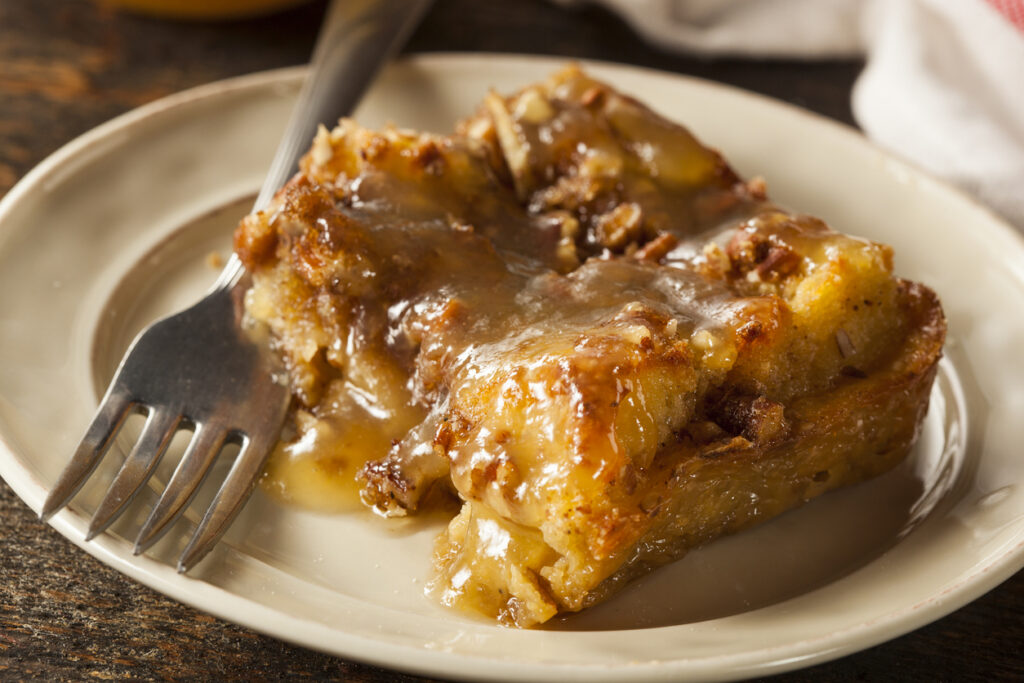
Bread pudding started as a way to use stale bread, often mixed with eggs, milk, and whatever sweeteners were on hand. It was common in school lunches and simple home kitchens. Today, it’s served warm with bourbon caramel sauces, chocolate chips, or fresh fruit at fine restaurants. The Washington Post described it as “a dessert that makes virtue out of frugality.” Its soft texture and comforting flavor have turned it into a classic finale. From overlooked leftovers to a baked dessert worthy of center stage, bread pudding proves that a few basic ingredients can become something worth savoring again and again.
46. Rice Pudding – From Nursery Staple to Silky Finale
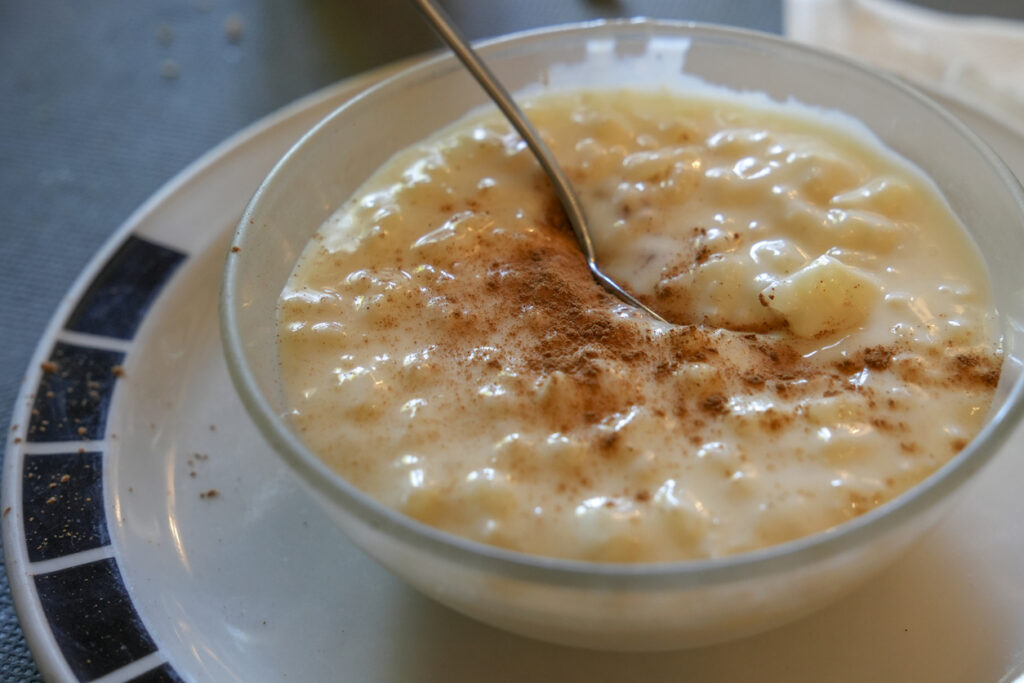
Rice pudding has long been a gentle, nourishing dessert made in homes around the world, especially during cold months or lean times. Cooked with milk and sugar, it was seen as comforting but unsophisticated. Today, rice pudding appears on fine dessert menus, flavored with saffron, cardamom, citrus zest, or brûléed for a caramelized top. Chef Marcus Samuelsson once said, “Rice pudding is proof that you don’t need a lot to create something luxurious.” Its transformation speaks to the universal appeal of soft textures and simple sweetness. What once soothed children has grown into an elegant, timeless dessert served with pride.
From Prison Plates to Platinum Menus—Every Bite Tells a Story
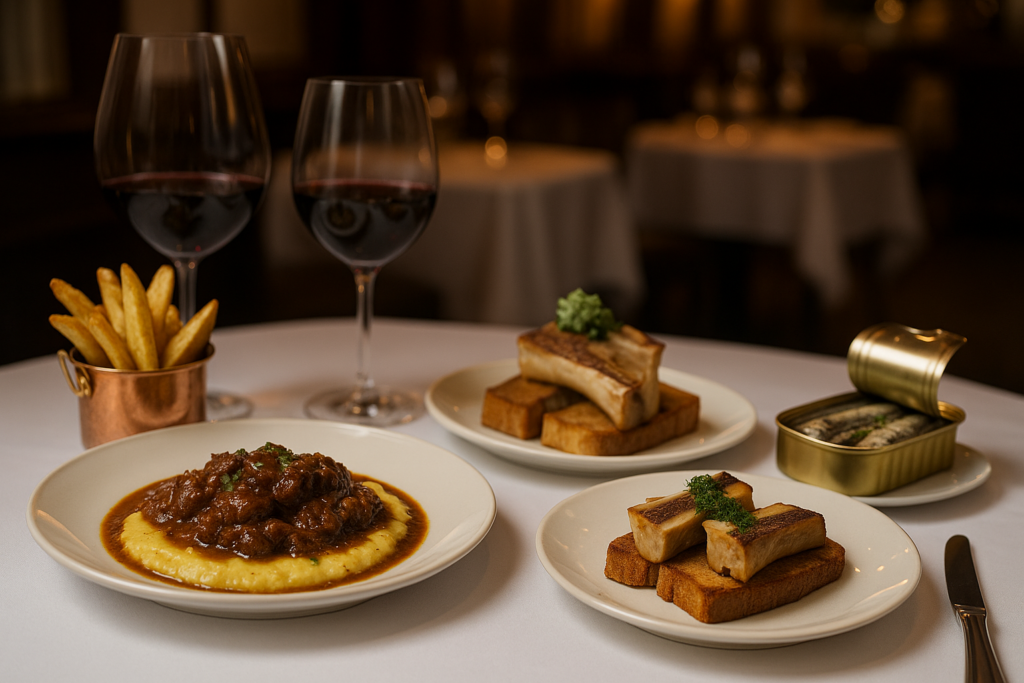
Food, like fashion, is never just about taste. It’s about timing, culture, context, and reinvention. Many of the dishes we now pay a premium for were once born out of scarcity, thrift, or even shame. What was once boiled in a back room or hidden under sauce is now plated with precision and served alongside rare wines. This full-circle journey isn’t just about culinary trends; it’s a reminder of how perception can transform even the humblest of ingredients. The next time you see oxtail ragù or duck fat fries on a menu, remember: luxury is often just clever history, reheated.
This story, 46 Foods Once Meant for the Poor or Prisoners—Now Eaten by the Rich and Royals was first published on dailyfetch.net.


